#Swap Force 3DS Enemies
Explore tagged Tumblr posts
Text
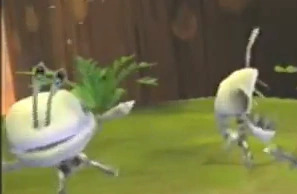
Did you know? In alpha builds of Skylanders: Giants, Bone Chompies were originally called Undead Chompies.
#Trivia#Undead Chompies#Skylanders#Skylanders Spyro's Adventure#Skylanders Giants#Skylanders Trap Team#Skylanders Battlecast#Skylanders Ring of Heroes#Skylanders Swap Force 3DS#Swap Force 3DS#Spyro's Adventure Enemies#Giants Enemies#Undead Forces#Enemies#Trap Team Enemies#Ring of Heroes Enemies#Undead Enemies#Battlecast Enemies#Swap Force 3DS Enemies#Fire Enemies#Skeletons#Chompies#Bone Chompies
8 notes
·
View notes
Text
Turn-based RPG ALZARA: Radiant Echoes announced for consoles, PC – a tribute to JRPG classics
From Gematsu
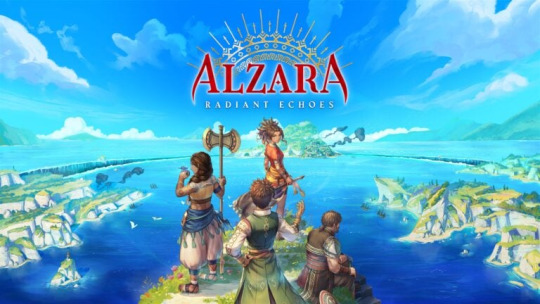
Montpellier-based developer Studio Cemlia has announced ALZARA: Radiant Echoes, a turn-based RPG inspired by classics like Golden Sun, Persona, Final Fantasy X, and Lost Odyssey. It will be available for consoles and PC via Steam in 2026. A Kickstarter campaign seeking €100,000 in funding is now live.
Here is an overview of the game, via its Steam page:
About
Restore peace to a world torn apart in this 3D turn-based RPG inspired by Japanese classics. Combine the elements to unleash spectacular attacks, solve magical puzzles, and bring the world together.
Key Features
A Vibrant Tribute to the Golden Age of JRPGs – Take control of four heroes as you embark on an epic journey inspired by classic JRPGs across the stunning world of ALZARA.
Harness the Elements – Harness the elemental magic of Kayla and her allies to battle the invading forces of Vedores. Share the magic to overcome puzzles and obstacles during your adventure.
Intense and Strategic Turn-based Battles – Swap between heroes to combine elemental magic and unleash spectacular attacks. Make offerings to gain favors and summon Legends to defeat your enemies.
A Mature, Relatable Story – Restore Peace to the vibrant world of ALZARA, where the mysterious elemental entities known as Zals answer to humans’ prayers. Lead the Resistance against the merciless invasion orchestrated by the neighboring nation of Vedores.
A Collaboration With Japanese Artists – We are honored to partner with two esteemed Japanese artists for this project. Renowned composer Motoi Sakuraba, celebrated for his contributions to iconic titles like Golden Sun and Dark Souls, joins us alongside main character designer Yoshiro Ambe, recognized for his remarkable work on games such as Trials of Mana and Fire Emblem Heroes.
Watch the announcement trailer below. View the first screenshots at the gallery.
Announce Trailer
youtube
13 notes
·
View notes
Text
I hope Princess Peach Showtime sells well.
Not only because it could lead to Peach getting her own spin-off series of games rather than just a one-off (something that I think is long overdue), but it could also lead to Nintendo having more faith that Mario's female leads can carry games by themselves, which in that case...
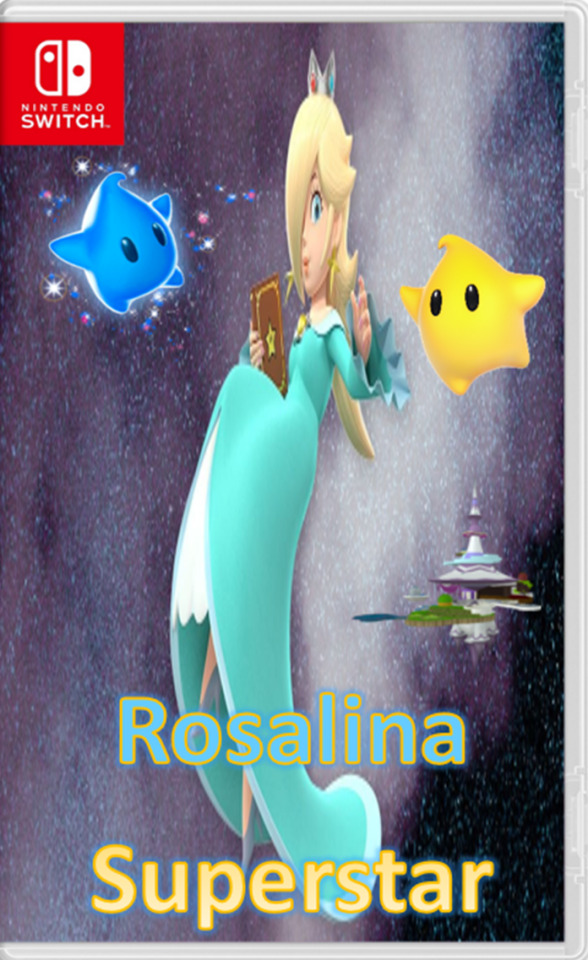
Here's my idea for a Rosalina game.
Feel free to steal this random Nintendo employee who might be reading this:
1 - The Genre
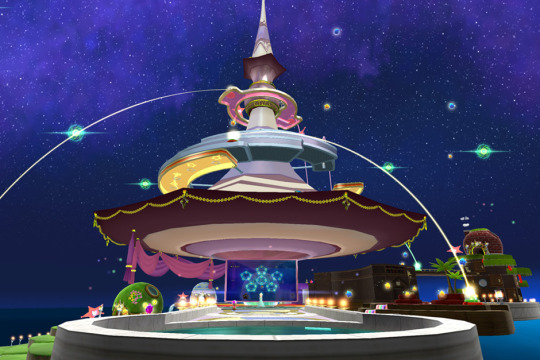
If this game were to ever happen, I'd want it to stand out from Super Mario games so it wouldn't seem redundant, so it would not be a platformer. It wouldn't be a sports game, minigame collection, or puzzle game either. It would be a subgenre that the Mario franchise has yet to dip its toes into.
I want Rosalina's solo game to be a Space Action RPG that emphasizes real time combat.
Not turn-based, like Paper Mario or Mario and Luigi, etc. I imagine it would play a lot like Kingdom Hearts, just swap out a keyblade for Rosalina's wand:

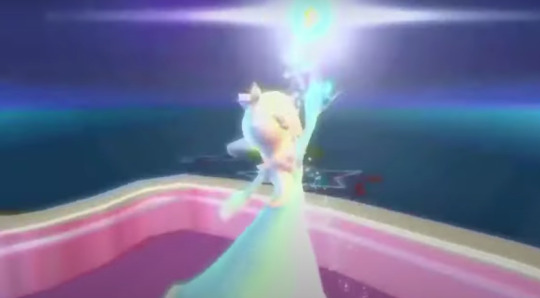
She could shoot beams of light at enemies for long range attacks, levitate them with her wand only to slam them on the ground, create a comet shower to rain down on enemies, manipulate gravity to deflect their attacks or slow their attacks down, briefly create a force field around herself to shield herself from an attack, emit extremely bright light from her wand to temporarily blind enemies to stun them, use her Grand Star final smash as a spell, maybe for some attacks she just outright uses her wand like a sword, etc. There are so many spells they could either make up or take from her previous appearances that she could use for her moveset. She wouldn't even have to be limited to using her wand! She could do the spin from Galaxy/her spin from 3D World as an close range attack, teleport to short distances away to dodge an enemy, fly, briefly become intangible, etc. Reminder, she has already been shown to be able to do most this stuff anyway!
Of course she wouldn't have all these abilities at the start, she'd unlock different spells and abilities throughout the game as you gain more exp by defeating enemies.
The main collectible and currency of the game would, of course, be Star Bits. The can be used to buy items (healing items, alternate costumes, etc) or to...actually I'll mention the other function later. Star Bits can be found lying around on every planet (as can other various items that can help you during gameplay) and be gained by defeating enemies.
Each level would be a different planet, and the Comet Observatory would act as the hub world as it did in Super Mario Galaxy, and would be used to travel to each planet. Perhaps there could be minigames between each planet where you fly through space controlling the Comet Observatory whilst collecting Star Bits along the way? Eh, I'm not sure. It sounds fun but maybe it'd be simpler to just travel to planets like how Mario did in Galaxy.
I imagine each planet would have a certain number of missions to complete on it before you can move to the next planet. Maybe their could be side-missions too, but they wouldn't be compulsory unless you want to 100% the game. At the end of each mission, you have the choice to return to the hub world (for a reason I'll explain later) or to just move on to the next mission. If you do choose to return to the hub world before you completed every mission on that planet, you can continue from where you left off later and would not have to re-do any missions you had completed on that particular planet so far. What would each mission involve? Well...
2 - The Premise

I think Ubisoft owns Cursa but they would be the perfect antagonist for Rosalina. Mario has Bowser, Luigi has King Boo, Wario has Captain Syrup, Peach now has Grape, so why not let Rosalina have her own nemesis? I know Cursa seemingly died at the end of Sparks of Hope but Cursa is literally made of a fragment The MegaBug so perhaps the same thing has happened again, a fragment of Cursa survived and mutates into a new form. I'm also aware Sparks of Hope isn't canon and likely takes place in a different universe than the one the mainline Mario games take place, but Cursa is a mutant cosmic entity, it wouldn't be so hard to believe it could travel to different universes. Cursa would still remember the events of Sparks of Hope, and seek revenge on Rosalina and rid the universe of all lumas. She would create a new army (of both her own creation and possessed aliens) she would send to capture all lumas.
If Cursa is the villain, the game starts with her making a direct attack on the Comet Observatory. Cursa attempts to possess Rosalina again, but Rosalina reacts quickly and creates a force field to protect herself. Cursa then orders her army to go after the lumas. Realising there's no time to fight each army member one-on-one, Rosalina gets in front of the lumas, briefly puts down her shield, and readies her wand to unleash a huge blast of light and energy to blast most of the army off into space. But Cursa strikes her just as she does so, and the clash causes a bigger, more unstable blast, that sends both Cursa, her army and the lumas away. Rosalina is left injured and soon passes out.
Cursa and her army would survive the blast and still be out there, in search of lumas.
Either do that or just have some new bad guy (preferably one who uses dark magic/symbolises dark matter to contrast Rosalina's star/light aesthetic) kidnap lumas. I don't really care what their name would be, but for the sake of this post let's call them...Void (placeholders don't have to be creative, shush). I'm gonna refer to Void with he/him pronouns but I don't have any specific gender in mind for Void. Void could be female, or genderless, etc.
As for Void's plan, maybe he could plan to absorb half of the lumas for energy so he'd become powerful enough to destroy the universe (except for the rest of the captured lumas), and then would force the other half to transform into whatever he wants (essentially, his plan is to remake the universe so he can rule it). He too would have an army, but of his own creation. Rosalina, naturally, would be the one to stop him given that it's basically her duty, not only because she's the mother of the lumas but also because she's the protector of the cosmos.
If Void is the villain, he (along with his army) would attack the Comet Observatory in the beginning instead. Void would not have to power to possess people, but he can absorb the energy of others. Void would go for the lumas first but Rosalina, in an attempt to protect the lumas, gets in the way and creates a force field around both her and the lumas. Void relentlessly attacks the force field in an attempt to break it, but it's no use. Despite this, Rosalina can tell Void won't give up, so she teleports outside the force field and the two battle, meanwhile Void's army attempt to break down the force field. It doesn't break but as the battle continues it does start to weaken. An unstable blast is caused in a similar way it's caused with Cursa; Rosalina readies a blast of light and energy (since it's one-on-one this one isn't as big), Void also tries to hit her but with a blast of darkness instead of light (something like a shadow blast), and when the attacks clash it sends the lumas and the army flying.
Rosalina and Void are left alone. Rosalina's tired but not severely injured. She's concerned about the lumas but Void, enraged by what has just occurred, manages to catch her off guard due to her fatigue and grabs hold of her to absorb her energy. This leaves Rosalina weakened and she passes out. Void leaves to search for his army and lumas.
The opening would be the in-universe justification as to why she lacks certain abilities (like the spin, teleportation, etc) at the start of the game (I imagine she'd be able to levitate herself and other people or objects, but that's it).
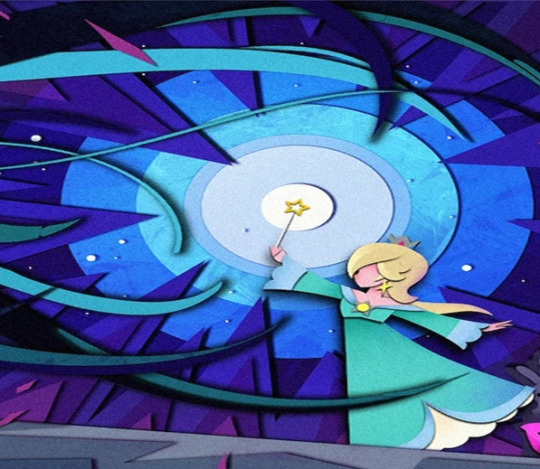
I don't have an entire story planned out, but basically Rosalina will eventually regain consciousness, manage to track down whoever the villain is (it's her job to watch over the cosmos, and with the Comet Observatory this is not a difficult task) and follows them in their search for lumas. She'll regain her energy (and hence the rest of her powers) as the game progresses. She loves the lumas dearly, and won't give up until she's saved every single one!
On each planet, some lumas are on the run from the army, and some have already been captured are guarded by the army, waiting for Cursa/Void to arrive so they can hand them over. Captured lumas are kept frozen in ice crystals found all over each planet in the game.
This is where those missions come in. For most missions, the objective is to save a specified amount of captured lumas, but some missions might be "Defeat [X] amount of enemies" or "Collect [X] Star Bits" or "Find/Go to [X]", etc. Side-missions could be escort missions where you help escort a citizen of that planet get to where they want to go safely whilst protecting them from enemies, or finding a stolen item and returning it to an NPC you've interacted with.
3 - The Hero(es)
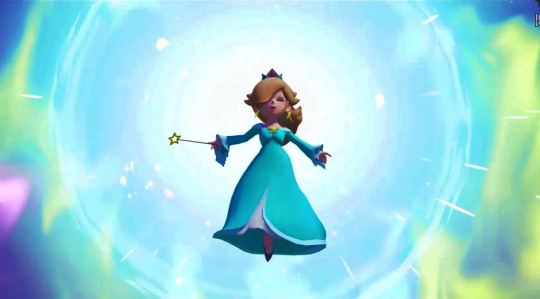
The only playable character is Rosalina BUT you can have two lumas in your party as partner characters at a time (they're kind of like Rosalina's Donald and Goofy), and they'd work similarly to how Sparks of Hope handles the Sparks. The lumas would float beside Rosalina at all times during gameplay like the one in Mario Kart Wii.
After completing each world (or at least the first 10), one luma can be added to your party once you've saved them.
Polari is the first saved luma that can join your party, then a Yellow Luma, Red Luma, Green Luma, Blue Luma, Pink Luma, Hungry Luma, Lumalee, Comet Tico, and finally Lubba.
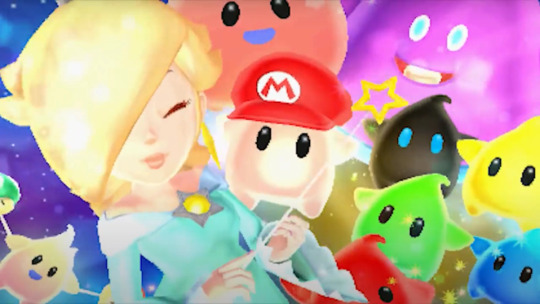
Some lumas have abilities they perform themselves , and some simply have effects on gameplay but don't do anything during battle. So for example:
(Abilities)
Polari can periodically turn into a small black hole that sucks in enemies.
Yellow Luma transforms into a Launch Star that Rosalina can use to launch herself further away than teleporting would, and can be used as a method of attack to dash through enemies with.
Blue Luma can transform into a small ice comet that will freeze enemies temporarily if they make contact with it.
Lumalee can grab items (except for star bits) from afar without Rosalina having to do it.
Hungry Luma can collect star bits from afar without Rosalina having to do it.
(Effects)
If Red Luma is in your party Rosalina will take less damage from attacks.
If Green Luma is in your party the duration of time Rosalina's force field can stay up during gameplay is extended.
If Pink Luma is in your party Rosalina will regain some of her HP when her health falls below 20% her total HP (but only 3 times per mission).
If Comet Tico is in your party the Cosmic Spirit, a clone that can help Rosalina in battle, will appear when her health falls below 20%.
If Lubba is in your party, the power of Rosalina's attacks is increased.
All lumas can be flung at enemies like Rosalina does with Luma in Smash, although here the power of this move depends on each individual luma's size.
You would only be able to swap out party members in the hub world, which is why there's an option to go back there at the end of each mission. Lumas can level up either by gaining exp whilst accompanying Rosalina in battle or by being fed star bits (see? I didn't forget about the other function!)
(Bonus) - Alternate Costumes?
I mentioned earlier that perhaps star bits could be used to buy alternate costumes. They could just be for aesthetic purposes, but I think it would be cool if each costume altered Rosalina's moveset.
Some costumes I have in mind are:
Cosmic Spirit
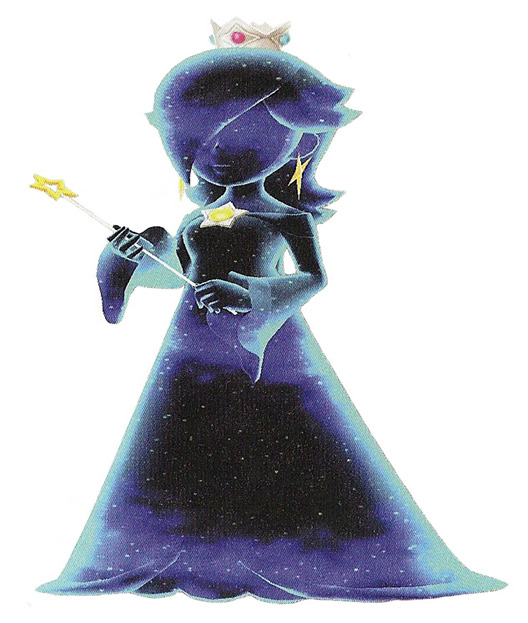
In this form, in addition to her usual moveset Rosalina can possess enemies, and maybe even the lumas so you can play as them. However, she is slower and cannot teleport.
Guitarist Rosalina
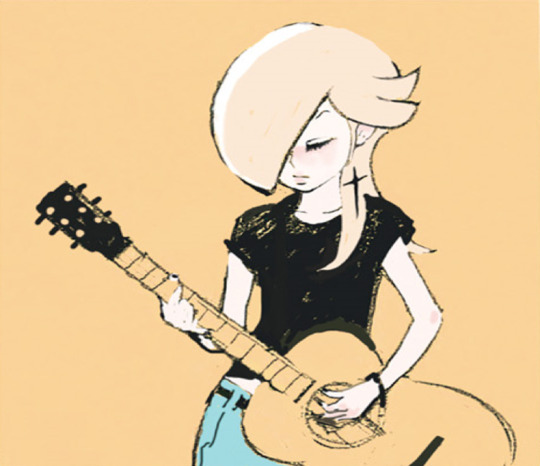
In this costume, in addition to her usual moveset, she can produce shockwaves when she strums her guitar as an attack, swing her guitar at enemies (like an axe), and moves at a faster speed, but she takes more damage than usual from attacks and cannot do her spin. Although I'd replace the guitar in the picture with the one she has in artwork for 3D World's soundtrack.
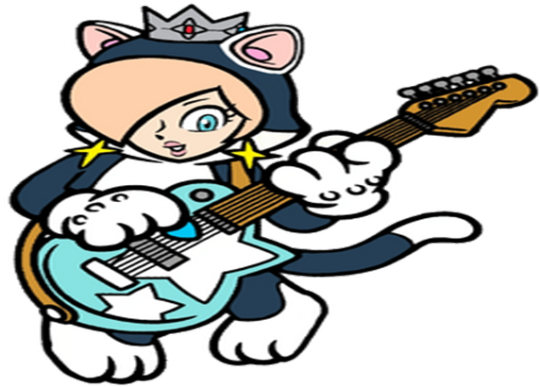
Young Rosalina
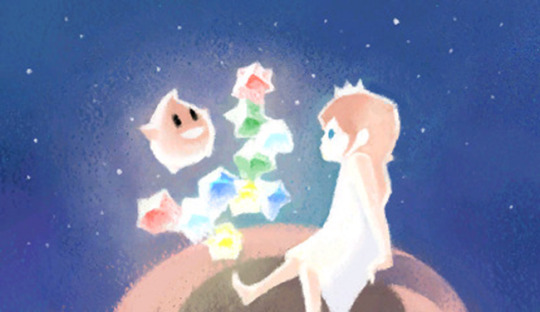
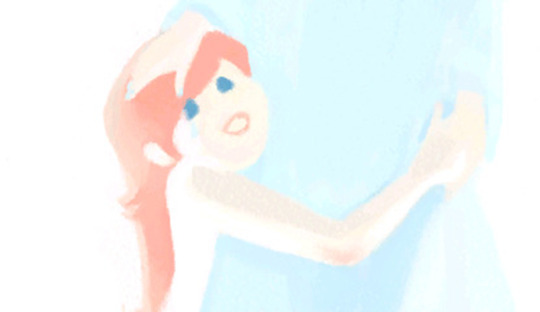
This costume would majorly alter Rosalina's moveset, so no using her wand, no teleporting, no flying, and her spin is weaker. It would essentially be a hard mode. I imagine her moveset in this costume would be more hand-to-hand combat focused. Perhaps she'd jump on some enemies as a nod to Super Mario games, maybe she could throw starbits as an attack, etc.
I'd rather Rosalina not use power-ups on this adventure (to keep this game distinct from other games in the Mario franchise), so no Fire Rosalina, Cat Rosalina, etc.
Some other costumes could be Rosalina Halloween, Rosalina Aurora...basically her Mario Kart Tour costumes other than the power-ups. They'd definitely just be for aesthetic purposes though, no affects on gameplay.
.
.
.
And that's all I got!
TLDR, Nintendo should make "Kingdom Hearts but it stars (ha) Rosalina".
#rosalina#nintendo#princess peach showtime#rosalina and luma#lumas#kingdom hearts#rosalina solo game#super mario#potential spin-off#please just make this or something like this I know it'll probably never happen but please it would be so cool
30 notes
·
View notes
Text
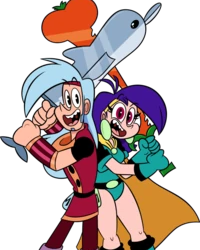
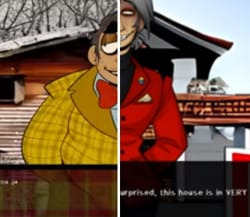
#Househuntedgame #MaisonTalo #HeimBaile #MightyMagiswords #TheCreatorWasSomethingElse #Prohyas #Vambre #MyThoughts
Both REALTORs I slowly started to like and might replace Prohyas as a character I used to simp for because the creator voices Prohyas with the recent news going around.
Now I want a art trade of Maison Talo luring the Warriors For Hire to later eat the Warrior siblings.
Images not mine but links are there and this might be the last time I talk about this series.
I imagine Maison Talo eating both the Warrior siblings and Heim Baile is just carryout a slugburger in the fast food place noticing the warrior's bags seem to be left behind like they were busy talking to Maison Talo that when they both enter the house and they can't fight back.
Felt like a unknown force swapped the real magisword bag with a replica bag that has 3D printed fake magiswords that don't work and act like real swords that leads the warrior siblings to their doom.
#MightyMagiswords – @bluepoodle7 on Tumblr
#Househuntedgame #ThisCoolSplitImage #ACoolFanfictionStory #StuffIRandomlyFind I saw this fan fiction story online from google... – @bluepoodle7 on Tumblr
When Fable's unknown mysterious force helps a hungry enemy out but needs to wait for the random right moment but has to agree to let both parties go also needs to be a weird handshake to agree on a promise be like.
whoever you are, thank you - YouTube
#Househuntedgame#Maison Talo#Heim Baile#Mighty Magiswords#The Creator Was Something Else#Prohyas#Vambre#My Thoughts
6 notes
·
View notes
Text
Final Fantasy VII Remake / Final Fantasy X Vs Chrono Trigger (1995).
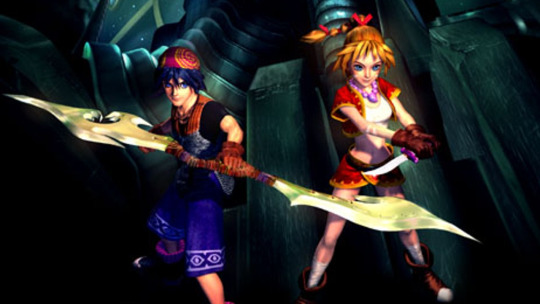
AI Prompt: Final Fantasy VII Remake / Final Fantasy X Vs Chrono Trigger (1995).
When comparing Final Fantasy VII Remake and Final Fantasy X to Chrono Trigger (1995), there are several key differences and similarities in terms of gameplay, story, and legacy.
Gameplay and Battle Systems
Final Fantasy VII Remake
Battle System: Final Fantasy VII Remake uses a real-time combat system with strategic pauses. The player controls one character in real-time while the rest of the party is controlled by AI. Players can use commands such as attacking, casting spells, and using items, but they can also pause the action to issue orders via the Command Menu. The game incorporates a Active Time Battle (ATB) gauge to manage abilities and magic, with a strong focus on both action and strategy.
Exploration: The remake features a more linear, cinematic approach to exploration with 3D environments. While there are areas to explore, the game tends to keep you on a more direct path compared to older RPGs.
Final Fantasy X
Battle System: Final Fantasy X uses a turn-based combat system with a Character Switch mechanic, allowing players to freely swap between all party members in battle. The Sphere Grid system is used to level up and enhance character stats and abilities, offering a high level of customization for each character.
Exploration: The world of Final Fantasy X is semi-linear, with some open-world elements, but it generally guides the player through different areas. The game also uses pre-rendered backgrounds for exploration with 3D models for characters and enemies.
Chrono Trigger
Battle System: Chrono Trigger features a turn-based combat system, but the key difference is its Active Time Battle (ATB) system. It uses a grid-based system, where characters and enemies take turns in real-time, but the player's actions are still strategic, especially when considering combo attacks with party members.
Exploration: Chrono Trigger uses a world map with different time periods (prehistoric, medieval, future, etc.) that you can visit. The exploration is more freeform than Final Fantasy X or VII Remake, as players can choose which time periods to visit and how to solve certain events across time.
Story and Narrative
Final Fantasy VII Remake
Story: The Remake focuses on expanding the story of the original Final Fantasy VII, introducing new characters and plot twists while reimagining classic moments. Set in the dystopian world of Midgar, it follows Cloud Strife, a mercenary who joins an eco-terrorist group called Avalanche to fight against the megacorporation Shinra, later discovering much larger forces at play.
Themes: The game explores themes of environmentalism, corporate greed, identity, and revenge. The story is character-driven with a focus on Cloud's journey of self-discovery and the looming threat of Sephiroth.
Final Fantasy X
Story: Set in the world of Spira, Final Fantasy X follows Tidus, a star athlete who is transported to a world under the threat of Sin, a massive creature wreaking havoc. He teams up with Yuna, a summoner on a pilgrimage to defeat Sin, uncovering deep secrets about the world and the nature of their lives and faith.
Themes: The game tackles themes of fate, sacrifice, and the cyclical nature of life and death. It explores the relationship between the characters, particularly the bond between Tidus and Yuna, as they confront the challenges of the journey. Final Fantasy X is deeply philosophical, focusing on breaking cycles and finding hope.
Chrono Trigger
Story: Chrono Trigger revolves around Crono, a young boy who is accidentally swept into a time-traveling adventure after a mishap at a science fair. He and his party travel through time, encountering a variety of characters from different eras, including a princess, a robot, and a caveman. They aim to prevent the destruction of the world by a mysterious force, Lavos.
Themes: The game tackles time travel, destiny, and heroism, with a strong emphasis on the impact of choices made throughout history. The plot is very dynamic, with multiple endings depending on player choices, making the story feel interactive and engaging.
Visuals and Art Style
Final Fantasy VII Remake
Visuals: The Remake features modern 3D graphics with highly detailed character models and environments. The visual style stays true to the original but has been modernized for current hardware, offering realistic environments and character designs.
Art Style: The world of Midgar is gritty, dark, and industrial, with futuristic, cyberpunk-like aesthetics. The character designs are more realistic, fitting with the more serious tone of the story.
Final Fantasy X
Visuals: Final Fantasy X uses pre-rendered backgrounds with 3D character models, which was state-of-the-art at the time. The graphics are colorful and vibrant, with a focus on magical realism in environments like Luca, Besaid, and the Calm Lands.
Art Style: The world of Spira is filled with lush, vibrant landscapes, creating a striking contrast with the darker themes explored in the game. The characters' designs are distinct, with unique personalities reflected in their outfits.
Chrono Trigger
Visuals: Chrono Trigger uses 16-bit pixel art to create beautiful landscapes, dungeons, and characters, which was considered top-tier for the SNES. The art is vibrant, detailed, and timeless, even by today’s standards.
Art Style: The design style is a blend of fantasy and science fiction, with highly stylized characters and environments. Akira Toriyama (creator of Dragon Ball) provided the character designs, giving the game a distinct, recognizable art style.
Chrono Trigger
Visuals: Chrono Trigger uses 16-bit pixel art to create beautiful landscapes, dungeons, and characters, which was considered top-tier for the SNES. The art is vibrant, detailed, and timeless, even by today’s standards.
Art Style: The design style is a blend of fantasy and science fiction, with highly stylized characters and environments. Akira Toriyama (creator of Dragon Ball) provided the character designs, giving the game a distinct, recognizable art style.
Conclusion
Final Fantasy VII Remake and Final Fantasy X are modern, 3D RPGs with deep stories and strategic battle systems, with VII Remake focusing more on real-time action and X emphasizing turn-based battles with character-swapping mechanics. Both are more linear in terms of exploration compared to Chrono Trigger, but they offer epic tales with beautiful worlds and character-driven narratives.
Chrono Trigger is a classic that blends time-traveling adventure, a unique turn-based combat system, and multiple endings, making it feel like a highly interactive RPG that stands the test of time. Its simpler graphics and pixel art style give it a timeless appeal.
Each game has its own unique flavor:
FFVII Remake has cutting-edge visuals and action-focused gameplay.
FFX delivers a character-driven experience with a focus on emotional storytelling.
Ultimately, it depends on whether you prefer a more modern action-oriented experience (FFVII Remake), a story-driven RPG with deeper philosophical themes (FFX), or a timeless classic that lets you shape your adventure with time travel (Chrono Trigger).
0 notes
Text
Baldur's Gate 3 Review (Xbox Series S)

Baldur's Gate 3 Review, is a story-rich, party-based RPG set in the universe of Dungeons & Dragons, where your choices shape a tale of fellowship and betrayal, survival and sacrifice, and the lure of absolute power.
Baldur's Gate 3 Review Pros:
- Stunning graphics. - 137.8GB download size. - 1000 Gamerscore. - Action RPG gameplay. - Official Dungeons And Dragons licensed game. - Nudity option - on/off. - Text settings - subtitles, show speaker icon, text background, background opacity, and dialogue text size slider. - Colorblind support. - Accessibility options - longer active search hold, center cinematic audio, force mono audio, overhead text size slider, explicit options, and camera shake. - Sensitivity sliders for each stick. - Five difficulties - Explorer, balanced, tactician, honor, and custom. - Tutorial pop-ups as you play and on the loading screens. - Fast loading times. - In-game cutscenes, FMV, and player interactions. - Two character choices - create your custom character or choose from the group of characters - Astarion, Lae'zel, Gale, Shadowheart, Wyll, Karlach, and the Dark Urge. - Your character can identify as male, female, nonbinary, and other. - In-depth character creator - origin, race (Tiefling/Drow/Human/Githyanki/Dwarf/Half-Elf/Halfling/Gnome/Dragonborn/Half-Orc/Elf), Class (Barbarian/Bard/Cleric/Druid/Fighter/Monk/Paladin/Ranger/Rogue/Sorcerer/Warlock/Wizard), subclass, background, abilities, skills, and appearance. Along with your name. - Choose a guardian to fight alongside you - randomize, race, sub-race, body type, voice, face, and basic face/hair/scar settings. - Enchanting soundtrack. - All the cinematics are of a movie quality. - Interactions and some actions require a skill check, this is done by rolling a dice and adding any modifiers you have to try and match/beat the shown amount. - It uses a lot of the Dungeons and Dragons 5e tools et and phrasing but in an inviting way. - The narrator of your story is like the DM (dungeon master) who narrates and describes events and outcomes as you play. - Save and load when you want. - Interactive points will be highlighted when hovered over. - A full 3D world with 360-degree camera control. - Running activity log in the corner shows at all times. - Online Co-op is drop-in and drop-out. - Play how you want. - Multiple choice encounters and questions. - You play the game like a typical 3D action game but you can click the left stick and make it more like a point-and-click game. - Such powerful performances from the amazing cast of memorable characters. - The world's and locations just look amazing. - It is a visual treat. - Recruit party members and you control them in battle, you can also swap between characters when roaming around. - Earned exp pops up above your head. - Round-based combat is where you can move, use an item, and do an action. - Radical menus are used for a lot of the menus, especially the combat ones. - Seamless transitions between cutscenes and gameplay. - Earn/unlock/buy new dice. - As you travel around the environment can help/hinder you like being in deep water or up high. - Handy right-click button to highlight all interactive points in the area. - Waypoints act as fast travel points. - To regain health and some supplies you can take a full or short rest, one gives all health, and the other only half your health. - You can share initiatives with party members when in combat. - Earn EXP and level up to get a stats increase, new passives, or spells. Your party members are dealt with by you aswel. - The campsite is where you can fully heal, replenish spells, talk with characters increase your relationship level, and organize who is going out on adventures with you. - At any point, you can teleport to your camp through the menu. - The map uncovers as you explore. - Aside from enemies, there are environmental hazards. - Travelers chest is your storage and you can send things there no matter where you are. - The journal stores all quests, inspirational dialogues, and tutorials. - To full rest you have to own all the needed food and supplies otherwise you have to do a half/partial rest. - If you ever wanted a digital Dungeons And Dragons experience this is it and you can do it solo or with friends. - The game helps the Tabletop game as it can inspire ideas and give insight into how a DM can work. - Anything can happen at any given time. - It has a strong grip on you so you are left thinking about the game long after you turn it off. - Every encounter is different even replaying an encounter through save scumming (reloading saves) can be different. - Group and ungroup at any time. - Find many secret areas and locations. Baldur's Gate 3 Review Cons: - Cannot rebind controls. - No random name generator. - The game never actually pauses when pressing start. - A lot to take in and for a long time especially if you've not played Dungeons and Dragons 5e or a game in this genre before. - Slowdown happens in places. - The game stutters when autosaving. - It's not always clear when you are breaking the law or what characters can see you doing. - No way to speed up enemy turns in combat. - The action camera shots can be quite bad. - Any sort of precision can be tricky. - You don't always get great feedback on combat. - The list of quests gets long and a nightmare to manage or even understand half the time. Related Post: Undying Review (Steam) Baldur's Gate 3: Official website. Developer: Larian Studios Publisher: Larian Studios Store Links - Xbox Read the full article
0 notes
Text
MY ARMY (literally)
Ever had that one thing you were obsessed with so much to the point where you had an army of the stuff?
Well, turns out I have an actual army. My army of ~105 Skylanders.
ONE-HUNDRED-AND-FIVE, COUNTING REPEATS. REPOSES, VEHICLES, ITEMS, ADVENTURE PACKS, EVERYTHING. I think it's 105, but I'm not sure. It's been a hot minute since I last counted.
And y'all may be askin'-
"Why are you mentioning this?"
Because I feel a bit daring, and the fact I haven't played on Nightmare Mode in any of the games, yet I completed all six console releases' stories (except Superchargers Racing and the 3DS ports), says that while I have the strength in numbers, that is the only thing I've one-up'd on.
And I don't even have Skylanders like Wildstorm, or Wallop, or even Bouncer and Jawbreaker. Instead I have ones like 'Cobra Cadabra' and 'Dino-Rang' and 'that one core Skylander from SWAP Force', which by the way, some of the Skylanders in that game are POWERFUL yet they're mostly forgotten. We talking Smolderdash and Trap Shadow and then the luck of the claw herself!
...
Scratch is my favorite Skylander. Which leads me to my second topic: I die easily in video games for one simple reason. I ALWAYS THRUST MYSELF INTO A PIT OF ENEMIES AND ALWAYS COME OUT HURT. And you may think I choose defensive paths. Well, "DEFENSE IS FOR THE WEAK," I say as I choose Scratch's ruby path. That's why I choose more offensive paths, which is why I'm like, the only person who like Scratch's top path. If you can't defend yourself, give them something they gave to you. Most of the time, a beating to the heads of those trolls.
1 note
·
View note
Photo


I finished 7th Dragon III Code: VFD on Nintendo 3DS just a few days ago and wanted to write something about it because it seems like it's a pretty overlooked gem. 7th Dragon III is a role-playing game developed and published by Sega and released in the west in 2016. The third game is the first one in the series that's been released outside of Japan.
Here's a synopsis of the premise: "In the year 2100, dragons have descended upon earth and humanity is at the mercy of these terrifying beasts. However, not all is lost. As the protagonist, the player will team up with Nodens Enterprises - a video game company dedicated to stopping the dragon menace - to become a dragon hunter and eventual savior of the universe. Although times are bleak, Nodens Enterprises has found a way to tip the scales in favor of mankind: By traveling through time to three different eras, the protagonist can upset the balance of the dragons' power. This will give them the edge to defeat the True Dragons, and stand a chance against the most powerful one of them all... the 7th Dragon: VFD."
7th Dragon III has a bit more unique classes and systems compared to your standard fare JRPGs - you even get to build a cat café. Its futuristic setting avoids the typical clichés of crystals and amnesia. It's actually a bit eerie playing the game in 2021 and the story mentioning a deadly sickness spreading in 2020 and 2021. Not going to spoil the story more but I thought it was pretty decent and even surprised with its darkness considering the overall happy tone.
Customization is quite versatile. You create one character to represent yourself and then create more to your team of 3, selecting one of the 8 classes, an illustration, style, a color palette and finally a voice (40 options of professional Japanese voice actors). After advancing the story a bit you can have 3 teams that you can swap. These extra support teams travel along with your primary team and provide support. Naturally each class has their own set of skills which you can purchase with skill points without restrictions. This was quite a nice feature as you're not bound to skill trees that would force you to get skill X first before you can invest points into skill Y. There are also special powerful "exhaust skills" you unlock later in the game.
The dungeon crawling gameplay is inspired by Etrian Odyssey but from third-person perspective and you don't have to draw maps. There's random encounters indicated by a "danger meter" and sometimes I felt like encounters were too frequent. You can stop enemy encounters for a while with a skill or consumable item if battles get too tedious.
Combat can get somewhat challenging when fighting the bigger monsters and bosses. I played on easy difficulty myself and was able to win the final battle on my third try.
There are quality of life features like teleporting to various locations and possibility to retry a battle if your team wipes. Side quests are carried out swiftly and conveniently when you can teleport inside the headquarters building too. Some small UI design improvements could have made the game more intuitive. Positive thing was that I didn’t have inventory management issues aside from not being able to pick up a “Healing Aloe I” because I already had 15 of them in my inventory.
The game features music by Yuzo Koshiro and it has a modern feel to it. There are upbeat and easy-going tunes, some of what I'd call elevator music, even poppy vocal tracks, but also some more dramatic orchestral pieces.
I finished the game in 52 hours so it should offer a decent value for your money if you measure it in play time. If you're into JRPGs and haven't looked into 7th Dragon yet, by all means give it a go.
12 notes
·
View notes
Text
I’ve been playing a lot of pokemon stadium lately. It’s got me thinking...
It’s a shame the current higher ups at the Pokemon Company don’t see the merit of those games outside of the fact that you get to see the pokemon in 3D, because Stadium games could really solve some of the bigger problems plaguing modern pokemon games. The original Stadium games were more than just 3D Pokemon. Yeah it was the primary selling point, but they also were essentially the post game for the gen 1 games, which famously had no post game aside from catching Mewtwo.
Stadium games used player versus player rules, where you couldn’t swap your pokemon out without sacrificing a turn, you could not use items, and your enemy had much more strategically built teams and movesets. There were tournements in which you had to follow certain rules like only using first stage evolutions, or pokemon under a certain weight. These games were meant for pokemon fans who wanted a bit more of a challenge and to shake things up a little.
That’s to say nothing of the fact that you could store all your pokemon and items, organize them with much more ease than you could on the games, and even use said items on your pokemon. It was a good way to store pokemon so you could restart your game without losing your pokemon and items without having to trade them to another game one at a time... but Stadium also included a trading function in case you wanted to evolve something ( provided you had two game paks and transfer paks ) ...also there are prizes to be won. Pokemon with special abilities, pokemon you’re forced to choose between, ect. I think later games added items...
You could also play the gameboy games on the big screen, and unlock the ability to play at triple speed for level grinding... but that’s less applicable now since we’re no longer a handheld series. That doesn’t mean they could not add a way to level up your pokemon in a theoretical new pokemon stadium game.
A stadium game with abilities, the physical/special split, held items, the full national dex, and the ability to use any pokemon you have stored in Home in tougher tournements with a variety of rulesets and more challenging pokemon league gym leader castles and elite four, while the main games continue only using pokemon in the regional dex and having an easier story focussed single player campaign would absolutely satisfy me enough to get back into the series.
Never gonna happen, but I can dream.
29 notes
·
View notes
Text
Avatar: The Last Airbender DS Game Review
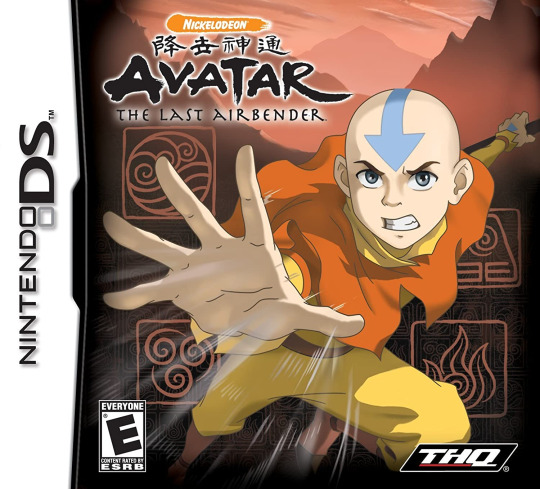
no one asked for this but i don’t ever see anyone talk about the atla videogames, which is a true tragedy, and i know that this may be because the video games aren’t technically canon, but i think they’re still worth talking about!
i finished this game in about three days, and i’m going to be talking about its gameplay, graphics, and story, all in that order.
spoilers below, as i’ll be talking about the entire game in depth.
Gameplay:
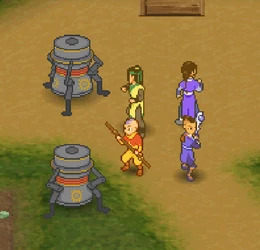
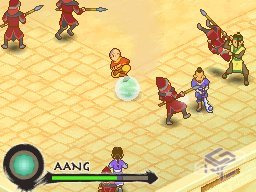
the bulk of the gameplay consists of controlling your party of four, which consists of aang, sokka, katara, and haru. you can swap between any member of your party at any time using the touchscreen. you can run around with the d-pad, and you can also walk by holding down the b button. but onto the combat- each member has a specific set of attacks they can use, with two kinds of attacks and defenses, primaries and specials, with attacks assigned to the y and x buttons, and defenses assigned to the b and a buttons respectively. the game is jrpg-esque, in the sense that it has (somewhat) random encounters and a multi-person party, each with strengths and weaknesses. the random encounters aren’t fully random, as the enemies (which range from animals to machines) can be easily spotted and avoided in the overworld, but they do chase the party down. there is no in-game option to run from any random encounter, as you have to purchase smoke balls to run away from a fight. each random encounter will either drop a healing item or an unspecified amount of gold, which can be used in shops.
the game works in “chapters”, similar to the actual show’s structure, which has episodes, each of which start you and your party in/near a village, according to whatever setting the plot deems necessary. in each village, there is a variety of shops, which include an herbalist, medicine man, and fruit seller. the herbalist will mix together any random herbs you find (for a fee) in the overworld, creating single use status-buffing items that have varying effects based on the kinds of herbs used. the medicine man (unsure if that’s what he’s actually called) will sell incense and smoke bombs, with the latter used to control the rest of the party, with different kinds of incense used to dictate their behavior in battle. for example, defense incense will make the rest of your party use more defensive moves, rather than offensive. the fruit seller sells various healing items, which range between single and party-healing. as the game progresses, these items grow more and more costly, requiring increasing amounts of gold. there are also hidden item boxes, though these are found in both the villages and world itself. items can be held in a sizeable inventory, but items must manually be moved up into a six-slot hotbar for use during combat.
though the bulk of the gameplay is exploration and fighting, there are also some smaller parts within the game that switch it up a bit. there are minigames, such as four nations force, which can be found in villages and is a pai-sho-esque game with similar tiles, as well as opportunities to train certain members of the party, namely haru (at least in my experience). there is a segment in which you can control momo, and have him solve a puzzle to open a door, and in that same segment, there is a mission where you have to utilize the b-button to silently walk past guards. there are a few of fetch-quests, though they aren’t too difficult, and drive the plot forward.
the gameplay isn’t anything groundbreaking or spectacular, but it serves its purpose well, and can make for some really fun strategy-driven moments where you have to constantly swap between characters to see if there’s advantages to using one over the other, and rationing out health items carefully to see if they’ll last you before a boss fight. there’s definitely a lot of combat, and, while the game doesn’t force you to, there is the inherent expectation of level-grinding, which can make certain segments of the game a whole lot easier, especially with unlocked specials and higher power. there is also the fact that, should you lose a random encounter fight with no smoke bombs, you are basically stuck in the fight until you win or quit, which are the only two options. furthermore, should you quit, you’ll be sent back to your last save, and you must manually save, as is standard for most games of this era, as it only prompts you to save at the very conclusion of a chapter. there is a bit of mercy, however- should your entire party die and you continue, your party’s health will be restored to at least a third, and all items used in the previous battle will return in your inventory, ready to be used again.
Graphics:
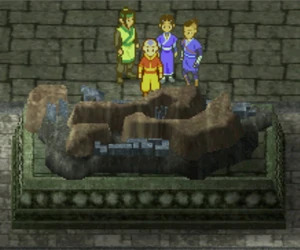
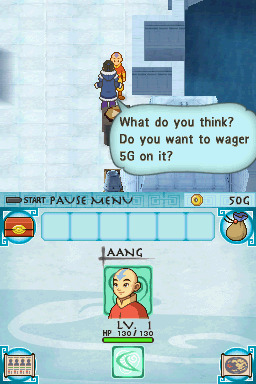
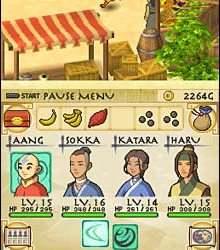
as is expected with ds games of this era, the characters are rendered in charming little pixel sprites, which each sprite being beautifully animated and full of personality. in cutscenes, each character emotes with their own set of sprites, and their mouths are animated when they talk. sometimes, their sprites are used for comedic effect- there are rarely moments where characters are just standing and spewing dialogue. there are also pixel-rendered portraits of each character in the party on the touchscreen, allowing you to see their health, moves, and level.
what’s interesting about this game, however, is that, while the characters are 2d sprites, their surroundings are 3d, and you can change the viewpoint of the camera at any time in the overworld with the l and r bumpers, allowing you to really see the entirety of the map. this makes exploring all the more interesting, as you can spin the camera around to see hidden loot boxes or other items you may have missed. in villages, there is a lot of new personality and depth given to each setting, especially familiar sights from the show such as omashu and the northern air temple. the aesthetic of the overall show is kept intact well, as even the npcs in new towns all appear to fit by design, and there is a sense of visual cohesion that makes it feel true to its roots. there are little nods to canon beyond just the main characters, such as one of the healing items in the game being a custard tart, and town designs expanding on already established settings.
each segment of the game carries with it a unique feel, making each chapter easily distinguishable from the last. the game has so much charm, with its bright visual styles and faithfulness to its canon inspiration, and each setting is unique and fun to explore. the only thing that may bog it down in terms of both gameplay and graphics is that a majority of the surrounding buildings in villages and cities can’t be entered nor explored- they’re just props. this gives a slightly empty vibe to the environment when you notice that the background props are just props. it would be much more fun to explore the given environment if there was more to do, rather than just the same three to five things. furthermore, while the camera function is very useful, it can also be really confusing in terms of navigation. there’s a map and a compass, sure, but sometimes you’ll be stuck spinning the camera until you’re absolutely sure you’re headed in the right direction. the map, at least, does give you an indicator on where you’re supposed to go next to advance the plot, and there is a similar kind on the compass as well, which helps immensely.
Story:

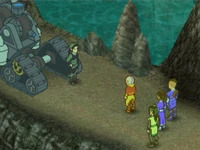
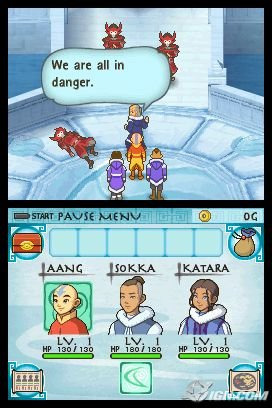
unlike other games (namely burning earth and into the inferno), this game’s plot is mostly standalone, and doesn’t follow the canon timeline very closely. there is less “a game about playing through the show’s events”, and more of “a game that uses canon elements to create a story of its own”. the story, which doesn’t fully fit within the bounds of canon, is still an interesting story to present nonetheless.
spoilers for the entire story begin here!
the story opens with aang, katara, and sokka in the north pole, where master pakku has been mysteriously replaced with a character named master wei, who tells the gaang that one of their waterbenders, named hiryu, has vanished. upon further investigation, a waterskin and a weird piece of metal is discovered where the waterbender was seen last- however, these investigations are quickly halted by the arrival of zuko and the fire nation, who kidnap katara as bait for aang. sokka and aang track her down to a fire nation prison, where they have to dress up as fire nation soldiers in order to sneak in and get info on her whereabouts in order to save her. while saving katara, they also discover another prisoner named lian, who is presumably being forced to work for the fire nation. after a brief battle with the warden, they find that lian has escaped on her own, and left a note behind, pointing them in the direction of an earth kingdom village.
after katara has been saved and the gaang follows the note, they find the village being terrorized by mysterious machines with the ability to bend/use singular elements, though they are being fended off by two earthbenders. upon further investigation, the earthbenders turn out to be tyro and haru, who were saving villages when this one was attacked by machines. after defeating the machines, the gaang learns from tyro that another bender has been kidnapped- an earthbender named yuan, who was one of haru’s closest friends. because of this, tyro encourages haru to join the gaang’s quest to find out where the machines are coming from, and points them towards the forest for clues, as a wise spirit resides there. the party then encounters a bear-like creature, which attacks them, though upon defeat, reveals itself to be the forest spirit, who gives them very cryptic answers when asked about the origins of the machines, saying something related to the heart of the earth kingdom.
somehow, this prompts the gaang (now joined by haru) to go to omashu, as it’s in the heart of the earth kingdom. aang decides to ask his friend king bumi to help them figure out where they need to go to find the origins of the machines, and the king, while happy to see his friends again, is forbidden from helping the group discover secrets, due to his royal counsul, who refuses to let them go to where they need to go. nevertheless, bumi directs them towards the earth kingdom royal library, where a scroll is found showing a series of bending techniques, as well as some kind of map. upon bringing their findings to king bumi, he points them in the direction of four paws island- an unmarked island off the coast of the earth kingdom. however, as the gaang prepares to leave, the fire nation attacks once more, forcing them to find an alternate route out of the city, where they are challenged by the royal counsul, who is revealed to be conspiring with someone relating to the machines. haru, enraged by the counsul’s traitorous actions, takes him on one on one, and, upon defeat, allows the gaang to escape to four paws island.
now on four paws island, the party finds more mysteries than they bargained for, as there are more machines terrorizing the people of four paws, as well as more benders going missing. unsure where to start, they begin to search the island for a statue they recognized from the royal library, soon discovering a hidden passageway underneath it that leads them to a model of the island itself, which holds a mysterious blue rock. the rock, covered in old writing, is then brought to the elder of the village, who reveals that it holds the entire history of four paws, and also serves as a key to a secret passageway. the passageway, which is discovered in the side of a cliff west of the village, is revealed to be a sprawling, underground lair, crawling with machines. at the end of it, a large machine sits in wait as a familiar face operates on it. the person reveals themselves to be lian, who has been building the machines in hopes of restoring peace to the world. the machines, she hopes, will wipe out and replace benders, thus evening the playing field, as the very existence of benders creates divide between people and nations. she worked with the fire nation solely to gain resources for her machines, as well as the omashu royal counsul, and she tries to persuade aang to join her, stating that he will never be ready to fight ozai. aang refuses, along with the rest of the gaang, and, in a fit of rage, she states that she will cut off his connection to the avatar state and unleashes her prototype bending machine on them, which uses three of the four elements to attack. upon defeat of the machine, the gaang rushes to catch lian before she can escape again.
the group now lands at an earth kingdom village that borders the air temples, and aang decides to take appa head off on his own towards the northern air temple, knowing that lian will most likely head there and destroy the avatar statues, mistakenly believing that this action will sever his ties to the spirit world. the story then alternates between aang at the air temple, and katara, sokka, and haru back at the village. while aang fights off machines and tries to protect the air temple from destruction, the rest of the group fights off machines in the forest, where the people from the village were trying to rebuild. after defeating the machines, however, a mysterious large machine appears, and katara, sokka, and haru are taken. when aang arrives back at the village after successfully protecting the temple, he is attacked by a drill-like machine, and has to destroy it on his own. upon defeating the machine, he discovers a large hole/tunnel in the ground, and decides to follow it, hoping it’ll lead him to his friends.
the tunnel leads aang to another village, where a large temple resides in the northwest that villagers refuse to enter, due to benders mysteriously disappearing around there. aang, after battling his way through the surrounding forest, enters the temple and discovers his friends imprisoned there by lian, and he is forced to save each of them separately. sokka is found trapped in a strung up cage, and he discovers a tool left behind by lian, which he uses to open locked doors within the temple. katara is inexplicably found on the other side of a large lava pit, and aang must fly across it to save her. haru is found in a metal prison below the temple, and, after being feed by sokka, tells the rest of the gaang where lian is headed. now fully reunited, the group heads towards the heart of the temple, which is blocked by a series of large rocks that haru makes quick work of, and they prepare to stop lian.
before stopping lian, however, the group discovers zuko, who lays injured on a bridge. aang, who runs to help him, asks if he needs help and assumes he was captured by lian as well, but zuko refuses to accept his help, instead berating the fire nation for trusting lian and her nefarious machines. the gaang reassures zuko that they will do something about the machines, but are forced to leave him behind, unable to do anything to save him at the time, despite aang’s protests. the group then falls for a trap, which unleashes an even stronger version of the prototype bending machine from before, which now has the ability to freeze water, and is forced to destroy it before they can continue. after the ensuing battle, aang, sokka, katara, and haru finally prepare to confront lian for the final time.
lian, standing in front of a powerful machine with the ability to use all four of the elements, is found alongside two other benders- hiryu and yuan, who are revealed to be working with and for lian, teaching her machines their bending techniques, as they support and believe in their cause, rather than held against their will, as originally believed. this upsets haru, who tries to convince yuan to join their group, to no avail. lian repeats her speech on division between the four nations and elements, stating that she would rather have thinkers in charge of the world, rather than magicians. she gives the group one more chance to join her side, lest they be eliminated by her ‘avatar’ machine, stating that benders such as yuan that side with her cause will be spared, and that benders such as zuko who refuse will suffer the consequences. aang, who firmly believes that zuko didn’t make the wrong choice, states that being the avatar is something that can’t be replaced by machines, and he and the rest of the party ultimately challenge and prepare to destroy her ‘avatar’ machine.
midway through the fight, however, a fireball is shot at aang, which none of the group sees except for katara, and she throws herself in front of it, taking the hit for aang. while the rest of the group rushes to her aid, lian mocks the group for being weak, showing that this is proof that her machine is stronger than all benders. enraged, aang enters the avatar state, facing the machine alone and destroying it quickly, soon passing out from exhausion once the fight ends. unlike in other iterations of this same game, lian survives and is helped by hiryu and yuan, who realize the consequences of their mistakes and elect to help lian and improve themselves. escaping as sokka and haru care for aang and katara.
aang eventually reawakens in katara’s arms, and sokka gets angry with katara putting her life on the line for aang, but katara says that she had to do something, as aang is important to not only the world, but her as well. aang learns that this message is applicable to his role as the avatar, realizing that he has a responsibility to help when no one else can, and he must accept his role in the world. soon, the group escapes the fortress over to appa and momo, and begin heading back to haru’s village, bringing him home before starting back off on aang’s quest to learn all four elements. zuko is also revealed to have escaped the fortress, and is upset that he missed his opportunity to capture the avatar.
spoilers for the entire story end here!
the story is extremely simple, yet chaming and full of twists. it’s definitely not something one would expect from atla’s usual fare, especially considering the technology and themes, but it still fits pretty well. lian is an interesting and dynamic villain, and her motivations are presented in a believable manner, and she makes for a pretty sizeable threat over the course of the story. the dialogue and cutscenes are generally entertaining, and the story is fun to watch unravel. the only things i personally took issue with were the pacing and some character inconsistencies. there’s a segment in omashu that’s a bunch of fetch quests that lead up to a joke, and, while the joke is pretty funny, bogs the pacing down a lot. there’s also no sidequests whatsoever (barring the singular one in the north), and there is no way to go back to a previous chapter, so you have to accomplish every single thing you want to accomplish before moving forward. the story is extremely linear, which works well, but i found myself wanting more, especially in the character department. surprisingly, haru works extremely well as a member of the gaang, and i found his interactions with them to be entertaining and fun to watch. it’s cool to have an atla piece of media that not only remembers him, but makes him an actual character. however, there’s not much for character on character interactions, even with all the cutscenes. i wanted to see more of this new gaang being friends, since it presented an entirely different dynamic from the show. there’s also the issue of some interactions feeling pretty flat, such as haru being imprisoned again and having no reaction to it, or sokka not being given much depth outside of being the butt of many jokes (outside of the one scene with the kid and the boomerang), but these are minor gripes in the face of the characters and story it presented. overall, i think the only big thing i have to complain about is the ending, which was changed from the original ending, where lian ambiguously dies and haru and yuan reconcile. it feels like a last ditch attempt to redeem lian and yuan, which i understand to some extend, but it feels extremely out of place and put in at the last moment. this also downplays haru and yuan, which is sad considering that yuan getting captured is what leads haru to join the adventure in the first place.
In Summary:
7.5/10. it’s a fun game with some difficulty spikes and a genuinely enjoyable story. i know that most tv show videogames don’t have a great reputation, so i think this was pretty good compared to what i’ve played before. the main things that keep it from being a 10/10 for me was the realization that the game wanted me to grind, lack of extra content that would’ve heightened the experience, some story and character snags, and rather repetitive boss fights. i took off an entire .5 for the fight with the spirit bear, which was a really infuriating experience (that was largely my own fault as i walked in unprepared), but other than that, i would genuinely recommend this game to anyone who wants a fun time with well-made spinoff videogame.
#this got way longer than i intended#long post#sorry guys i just had to recap this game in detail#no one else would#also for anyone wondering the characters i used the most were aang and haru#i liked all of aang's specials and well#we all know that i love haru so#now! onto burning earth!#hope you guys enjoyed this lengthy review#atla#avatar the last airbender#atla ds game#avatar the last airbender ds game#atla game#atla videogame#aang#atla aang#aang atla#katara#atla katara#katara atla#sokka#sokka atla#atla sokka#haru#atla haru#haru atla#lian#atla lian#lian atla
13 notes
·
View notes
Text
Bursted my way through a bunch of smaller indie titles that I had been accumulating on my Switch, so here’s a brief review of all four of them!
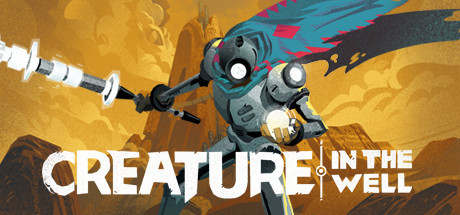
Creature in the Well: This actually came out nearly a full year ago now, but I only just picked it up. It’s a nifty little action game themed after pinball: you control a robot who’s charged with re-powering a mountain-sized weather machine, and you do this by hitting balls of energy into de-powered pylons. Re-powering pylons earns you energy points, which you can to open the way forward and, if you find the right materials by hunting for secret rooms by completing trickier pinball puzzles, power up your robot so that it hits harder and faster. My biggest complaint is that the “dungeons” are all made up of identical rooms, but shuffled around and palette swapped, so an already short game is made to feel even shorter by how samey everything is. A fun romp, but there’s really not much else to say about it.
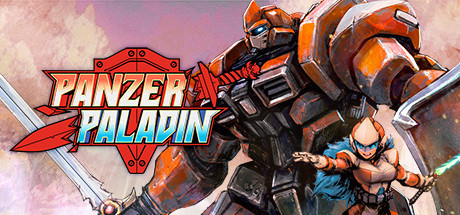
Panzer Paladin: Sorry to say that this was definitely the most disappointing game on this list, especially since this was the one I was most hyped for after demoing it at PAX a few times. It’s a platformer that takes nearly all of its design cues from Mega Man, except that instead of a robot with a projectile, you control a robot with a laser whip who pilots a giant mech who picks up all sorts of swords, spears, and clubs from the enemies they beat. The weapons the mech acquires all have durability, but they also have an associated spell, and you can manually break them to do things like boost your attack and defense, heal yourself, enchant your weapons with a beam attack, and a few other fun niche abilities. The problem is that despite taking its design cues from Mega Man, it executes worse than the original Mega Man on basically everything. There are too many stages, and they’re all too long and homogeneous with bad checkpoints and sudden difficulty spikes, typically right before a checkpoint. You have a stage select, but it ultimately doesn’t matter because the only thing you get from beating any particular boss is a weapon with a higher attack, durability rating, and unique appearance, but are otherwise functionally identical to all the other weapons you get. Even its neat original ideas don’t hold up great: you can hop out of your mech and platform with your much smaller and much more fragile main character, but the only reason you’d do this is if the game requires it or if your mech loses all of its HP, and you might wind up in a situation where you get to a checkpoint but can’t actually use it, because checkpoints have to be manually activated by your mech giving up a weapon, so most of the time if you find yourself without a mech, it’s easier to just take the L and throw yourself into a pit. Ultimately, the best thing about the game is its character design in cutscenes, which is very much inspired by late 70′s/early 80′s anime like Captain Harlock and Super Dimension Fortress Macross.
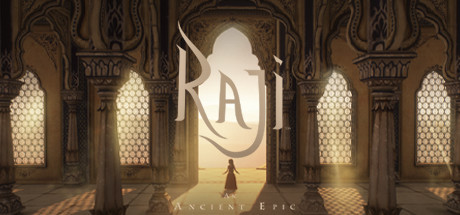
Raji: An Ancient Epic: Raji was the game that caught my attention the most during the recent Nintendo Indie direct, both because the game and the story behind it seemed neat. The development team is almost entirely from India, a part of the world not particularly well known for game development, and certainly not action-adventure games with an emphasis on combat. It was also rescued after a failed crowdfunding campaign, and is currently being featured as a timed exclusive for the Switch, so I was rooting for it as soon as I found out about it. You play as Raji, a circus performer in ancient India who sets out to rescue her brother after he’s abducted by demons. The game is narrated by the Hindu gods Durga and Vishnu, who also grant Raji boons in the form of weapons and elemental blessings so she can hold her own against the demons. The adventuring part of the game is pretty simple, mostly just contextual button presses, and you’ll occasionally arrive at very simple rotation based puzzles, or murals depicting Hindu mythology that you can interact with for context. The combat is the more interesting part of the game: you have a series of three light attacks, heavy attacks, and dodges that chain into each other infinitely (compare to other action games where you have defined combo strings that force some kind of pause at the end unless manually interupted), which is pretty necessary how many enemies you can be put up against at once and how much wind-up your attacks have and how little hitstun the enemies suffer. It’s definitely different than what I expect from combat, but not necessarily bad. The game does have a number of issues, including (especially) technical performance on the Switch, difficulty completely falling off once you get your last elemental blessing, and a story that ended so abruptly that I thought maybe I missed a true ending requirement somewhere along the way- ultimately, all the kinds of things you’d expect from a crowdfunded game from a brand new studio. I’d say the game is worth giving a shot, but you’d probably be better off waiting for it to come out on other consoles or PC. It’s not the worst Switch port I’ve ever played, but running better than Bloodstained isn’t too high a bar to get over.
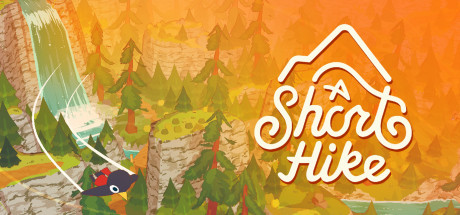
A Short Hike: Easily the best game on this list. As the title implies, A Short Hike is about hiking up a trail to get to the top of a mountain. You can choose to take the direct route up the mountain, or explore the campground and do some other activities, such as collecting seashells, boating, or parkour racing. Based on that description, you might think the game is just a walking simulator, but the critical addition of simple mechanics like jumping, gliding, and climbing instead result in a game that feels like Breath of the Wild set in the low stakes world of Animal Crossing, complete with big eyed animal folk who look almost exactly like Animal Crossing villagers. The controls are nice and tight, and it runs as smooth as butter on the Switch thanks to the simplistic art style, which is best described as “3D on a Nintendo DS”. My only strike against the game is that it’s writing feels very... “be gay do crimes”. That’s probably the wrong way to describe it, but that’s the phrase I think of when every piece of dialog in a game feels very quirky and saccharine and absolutely nothing else. It’s not a bad tone for a game like this, and I did have a few laugh out loud moments, but I wish there was just a bit more variety in that respect. Even so, this game is absolutely in the running for a spot on my personal Top 10 of the year (even though it technically came out on PC last year).
7 notes
·
View notes
Text
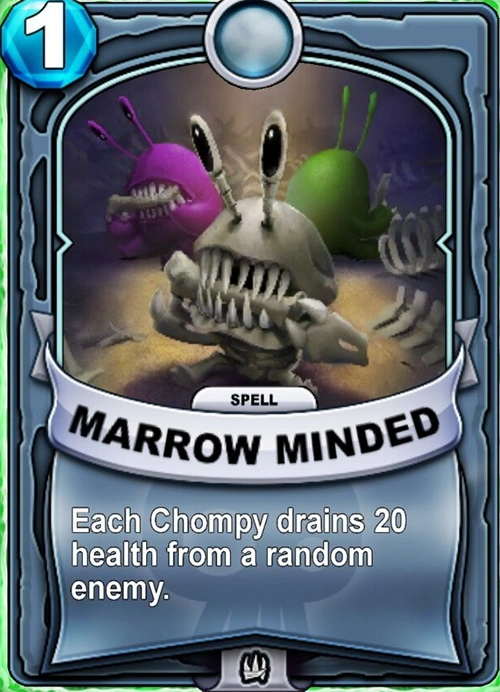
Marrow Minded is one of Bone Chompy's Common (unobtainable) spell cards in Battlecast. Each Chompy drains 20 health from a random enemy.
#Battlecast Cards#Skylanders#Skylanders Spyro's Adventure#Skylanders Giants#Skylanders Trap Team#Skylanders Battlecast#Skylanders Ring of Heroes#Skylanders Swap Force 3DS#Swap Force 3DS#Spyro's Adventure Enemies#Giants Enemies#Undead Forces#Enemies#Trap Team Enemies#Ring of Heroes Enemies#Undead Enemies#Battlecast Enemies#Swap Force 3DS Enemies#Fire Enemies#Skeletons#Chompies#Bone Chompies
3 notes
·
View notes
Photo

Name: Small Mario
Debut: Super Mario Bros.
Today we’re talking about one of the most overlooked things in the entire Mario series... it’s this particular pint-sized plumber, Small Mario!

Everyone knows Small Mario. Heck, the Small Mario sprite from Super Mario Bros. is easily more iconic than the Super Mario sprite! Small Mario is basically the default Mario, and unless you’re a gamer without compare, you’re gonna be spending a whole lot of time playing as him. But have you ever thought even a little bit about just what the heck this form is?

Mario starts as Small Mario. He eats a mushroom and becomes Super Mario. Which, if any, is the “true” Mario? “Super Mario” certainly sounds like it’s meant to be a powered-up form. Is Mario’s true form that of a toddler-sized weakling, condemned to instant death if a turtle so much as looks at him the wrong way? I don’t know! Don’t ask me!
...Okay, fine, I can’t say no to you. You can ask me. Small Mario is a result of graphical limitations! Super Mario was SUPPOSED to be the default, but the idea for Small Mario came about in order to have more space to see around Mario. But you know us! Logical explanations aren’t enough. We’re gonna need a SILLY one! But first, a bit of a showcase!

Super Mario World’s Small Mario is my favorite of all. Just look at him! He’s adorable! I don’t even mind being in danger of any enemy when I get to look at this little guy.

I’m also a pretty big fan of the Small variants in Super Mario Bros 2, where they get absolutely massive heads! Look at Toad! You can’t even see his feet! They just REALLY didn’t want to draw unique small heads, huh?
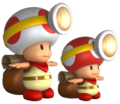
A neat touch in the 3D power-up based games is that Small forms change up the designs a bit so it’s easier to tell from above! Plumbers lose their hats, princesses get shorter hair, and Toads get swapped cap colors. And they all look like BABIES!
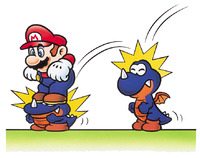
Now time for the ridiculous theory! Time to make Small Mario canon! Here, we have Rex from Super Mario World. When jumped on, they squish down, becoming smaller, and requiring one more hit to defeat. It’s obviously just them being flattened by the force of the stomp. But it reminds you of someone, doesn’t it...?


The same game introduces the Dino Rhino, which, when damaged, becomes a smaller Dino-Torch. Even more curious! This is no mere flattened form, but an entirely smaller version of the same creature, like Small Mario! Dino-Torches can breathe fire, an ability which their larger variants lack. This is likely a defense mechanism meant to aid the young of the species in their most vulnerable period, while the adults do not have any natural predators, and so do not need to allocate the energy to maintain a biological fire-breathing system. Small Mario, too, has a trick up his sleeve that not even Super Mario can boast- his small size allows him to fit through some smaller passages!
So that makes two dinosaur enemies with a form oddly similar to Small Mario... hmm... well, let’s just cut to the chase.
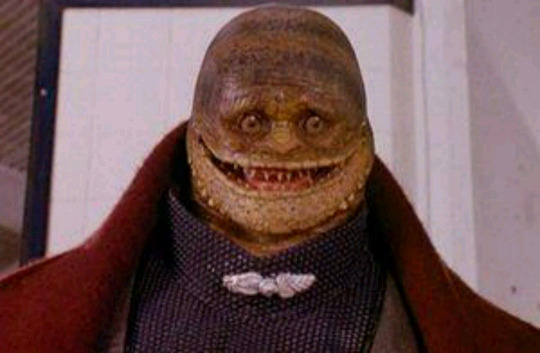
Humans and dinosaurs in this world share the same basic biological response to damage. The Super Mario universe is one where humans evolved from dinosaurs!... I don’t know. I’m tired. This seemed better in my head.
349 notes
·
View notes
Text
Saturn Games
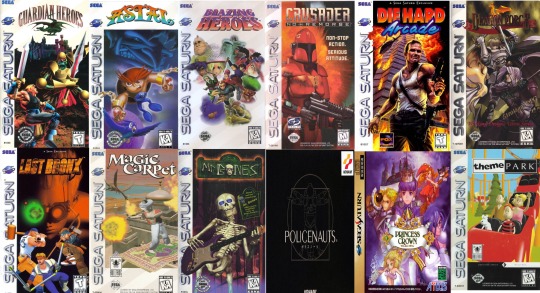
12 Sega Saturn Games All Gamers Should Play
After the 16-bit console war between Sega and Nintendo, Sega started to noticeably lag behind. However, just because consoles like the Saturn and the Dreamcast weren’t extremely successful in sales doesn’t mean their library was lacking in awesome and weird genre-bending titles.
Not every franchise got to “graduate” from the fifth-generation of consoles, but that doesn’t mean they aren’t fantastic. Modern gamers might not know much about these, but these are truly memorable Games From Sega’s console-exclusive heyday. Get your hands on these games however you can; they’re really unique experiences on a very distinctive console.
Guardian Heroes
Before Castle Crashers showed off how fun a beat-em-up can be with RPG mechanics and simple combos, there was Guardian Heroes. This game was well-received when it originally came out on the Saturn, but now, it’s largely forgotten. The series has a spinoff on the GBA and a port to Xbox 360/Xbox One, but other than that, there’s been no word of a sequel or revival–not even a rumor.
The game controls like a fighting game with juggle combos, aerials, special moves, and a mana bar. There are only six characters playable in the story mode (two unlockable), but there are fun multiplayer versus modes to mess around with. After defeating a character in the story mode, they’re unlocked for use in multiplayer, and the combos can get pretty crazy with six concurrent players.
Dragon Force
Dragon Force is from an era where “RTS/Tactics RPG” wasn’t that unique of a genre. Nowadays, we have Fire Emblem, but Dragon Force was smack-dab in the middle of a golden age of Langrisser, Fire Emblem, Final Fantasy Tactics, and many other SRPG hits.
Something that sets Dragon Force apart from its peers is that it focuses on large-scale battles instead of small-scale ones. The fights aren’t duels like in Fire Emblem; generals can collide with 100 troops on each side, duking it out in skirmishes. Time passes in “weeks,” which lets the plot advance while you make out-of-battle decisions.
The game sold well at the time, but its sequel (also on the Saturn) never left Japan. No one spoke much about this game after the Sega Saturn kicked the bucket, which is a real shame; Dragon Force is a true diamond in the rough.
Astal
Action platformers were falling out of vogue by the time the Sega Saturn hit the stores. Astal, however, came out early in the system’s lifespan, and was still able to capitalize on the craze. The titular character Astal can grab and throw objects or enemies. He can also slam the ground and blow big gusts of air. On top of that, he has a super meter that commands his bird companion to bounce around, knocking out all enemies on screen.
This is a fun asymmetric co-op game, too. The second player plays as Astal’s bird companion, instead of just a palette-swapped version of Astal. The bird has his own unique set of attacks, making this game worth checking out with a friend.
Astal is short, but has challenging gameplay backed up by a unique hand-drawn aesthetic. Many indie games nowadays use hand-drawn graphics as a selling point, but it was really rare during the fifth console generation. The main character has had cameos in other Sega games since, but there’s no word of a sequel, revival, or crossover with another franchise.
Mr. Bones
At its core, Mr. Bones is an action platformer about a reanimated skeleton that can lose and regain limbs instead of using health or lives. That’s not totally accurate, though; certain levels were based on non-platforming genres, with rhythm game elements, Breakout-style gameplay, or perspective changes. It’s more like Lawnmower Man on the SNES rather than Castlevania.
The first run-through of the game is extremely silly and fun, especially going in blind. Getting used to the “skeletism” meter to replace the traditional health meter takes some getting used to, but it creates a fun sub-game of trying to hang onto all your bones. It really sucks not having your legs and being unable to jump in a platformer. Mega Man wouldn’t be as fun if he had to climb on the ground with his arms–but that’s part of what makes Mr. Bones so hilarious.
Mr. Bones had a very polarized reception, with some critics praising how much variety there was in gameplay while some others would have just preferred a normal platformer. This isn’t the greatest platformer of all time, but sometimes it’s just worth playing a game where the developers threw caution to the wind and put in every single gameplay function they felt like.
Policenauts
Before Hideo Kojima made Metal Gear Solid, he was making story-focused adventure games for a variety of platforms. After finishing the cult cyberpunk game Snatcher, he set to work on Policenauts, a sci-fi story about astronauts that are also law enforcement officials. It came to the PlayStation, the PC-9821, the 3DO, and of course, the Saturn.
Policenauts is like a cross between a point-and-click adventure game and a visual novel. It’s interactive, and requires the player to be a good detective and figure out the right dialog options to select and the right items to interact with. The Saturn version is also considered superior to other ports because it has first-person light gun segments not seen elsewhere.
There is an unofficial translation patch available for the Saturn, which uses dialog from an earlier fan translation for the PlayStation. If you want to see where Kojima honed his writing chops, play Policenauts. You’ll be the cool person that’s already played it once it gets an HD remaster.
Note that this came was never released in the U.S. and can only be played on Japanese Sega Saturn Consoles!
Princess Crown
Do you like classic beat-em-ups? How about collectible armor and items? Do you like a cutesy anime style backed up by serious gameplay? What about classic RPG enemies and locations with high-quality pixel art? If you answered yes to any of these, pick up Princess Crown.
Princess Crown is the brainchild of Capcom veteran George Kamitani. Because it was released near the end of the Saturn’s lifespan, it was a commercial failure, which led to Kamitani getting blacklisted in the games industry. He later went on to found Vanillaware, which re-established him as a developer.
Princess Crown’s core gameplay went on to spawn many spiritual successors, such as Odin Sphere, Muramasa: The Demon Blade, and Dragon’s Crown, all made by Kamitani. It’s great for the industry to have specialists like him.
Note that this came was never released in the U.S. and can only be played on Japanese Sega Saturn Consoles!
Mystaria: The Realms of Lore/Blazing Heroes
If you’re a fan of classic grid-based tactics RPGs, give Mystaria a try. The graphical limitations of the Saturn give it a unique, blocky, and vibrant aesthetic. There’s twelve special characters for you to get, and the story changes depending on who you want to recruit first. The story is not that complex, but being non-linear is a huge plus for keeping gamers engaged.
The menu system for navigating combat is cumbersome at first, but once you get the hang of it, it’s fluid and fast. Plus, there’s a first-person camera mode, which is novel and weird. Try to play it in that mode, because you can’t get that in many other tactics RPGs.
Take a look at Mystaria if you feel like seeing what was once considered “next generation.” The game might seem archaic or underdeveloped now, but when it was released, Mystaria heralded what RPGs were going to look like, with 3D spells and effects backed up by camera changes to create cinematic fights.
Mystaria was released in North America as Blaze Heroes; they are the same game!
Crusader: No Remorse
There aren’t many games by Western developers on this list, but Crusader: No Remorse has definitely earned its entry. It uses pre-rendered graphics with an isometric perspective, much like the original Fallout or Diablo games. The gameplay, however, focuses on shooting, action, and interactable environments rather than RPG mechanics.
The environment destruction and playability is really where this game shines. There are alarm switches, non-combatants, puzzles, and a perspective that supports tactical gameplay rather than run-and-gun shooting. Most of the objects you see can either be destroyed or turned on your enemies in creative ways. If there’s a trap set for you, you can set it for somebody else.
There’s a sequel titled Crusader: No Regret, but it is only on MS-DOS. The first Crusader is actually recognized as an inspiration to the Fallout team. If you’re a fan of post-apocalyptic Western games, No Remorse is worth playing alone just for its contribution to the genre.
Die Hard Arcade/Dynamite Deka
Die Hard Arcade isn’t extremely faithful to the movie it’s based on, but the liberties it takes are genius. To start with, it’s a beat ‘em up that focuses on fighting game-style combos and improvised weapons. It also uses texture mapping that gives it a realistic feel, not unlike the sports games of the era.
Beat ‘em ups were falling out of favor at the time (much like tournament fighters and 2D platformers), but Die Hard Arcade kept things fresh. It’s got classic mainstays of the genre, like end-level bosses and two-player co-op, and the game brings with it a simple 3D setting and a boatload of attack options.
It’s short, but you’ll be happy to play it again and again, using new weapons and trying new combos. It’s really hard to beat crime bosses on the head with a broomstick. (Plus, Dynamite Cop on the Dreamcast is a great sequel, even though the setting is obviously different.)
Last Bronx
Last Bronx is, in many ways, a distinctly Japanese game. The setting is an alternate-future Tokyo where gangs and criminals rule. It’s a 3D fighting game that plays a lot like Virtua Fighter, but without ringouts. All of the characters and locations are unmistakably Japanese, with little room for the “worldwide fighting” variety the genre usually features.
Even though gamers in North America didn’t give the game too much attention, it was an instant classic in Japan. Casual gamers loved the variety of modes, the weapon-based gameplay, and the fluid animation. The graphics are better on the arcade, but the Saturn version is no slouch.
If you end up liking the game, there’s comics, a novel, radio dramas, and even movies to go along with it. Don’t bother watching the movie if you’re not a fan of the game, though…it’s pretty rough.
Magic Carpet
Peter Molyneux is popular these days for two things: over-promising on series like Fable, and getting mistaken for Stefan Molyneux. In his heyday, he was the king of making solid games with innovative aspects, like Black and White. Even before that, though, he worked on Bullfrog’s Magic Carpet.
The title describes it pretty perfectly. It’s a 3D flying game where you control–you guessed it–a magic carpet. The goal is to destroy monsters, collect their magic mana, and use it to build up a castle in each level.
The game is subtle, smooth, and some pretty simple fun. It’s great for zoning out with the lights off, flying around in the early-polygonal 3D environments and enjoying the sprites and spells. It probably won’t end up being your new favorite game of all time, but it’s a unique experience for the Saturn.
Theme Park
No one needs to be told that Roller Coaster Tycoon is a great series, and they’re undoubtedly some of the greatest games of all time. Before there was RCT, there was a game simply titled Theme Park, developed by Peter Molyneux and his crew at Bullfrog Productions.
The gameplay is self-explanatory for anyone familiar with the sim genre. Set up your rides and manage the logistics of the park. Try your best to keep it clean, keep it profitable, and most importantly, keep yourself from getting addicted. There are some elements in this game that aren’t seen often in other sim games, like managing the park’s financial stocks and negotiating business deals. Once you’ve made enough money on one park, you can auction it off and make another on a new plot of land.
Theme Park saw high critical acclaim upon release. Even though there were plenty of sim games sprouting during the fifth generation, Theme Park had a playful aesthetic and wasn’t as serious as Sim City or other competitors. Like many other sim games, it was developed with PC gaming in mind, but the console ports (including the Saturn) are just as smooth.
3 notes
·
View notes
Text
Lost Summer Deep Dive - Christie Monteiro Part 1
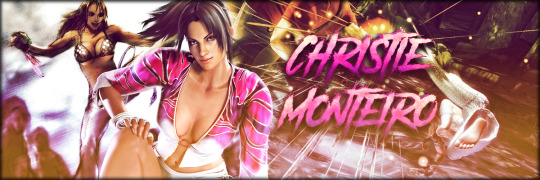
An In-Depth Look At A Capoeirista Forgotten By Lore
by Nay Holland
When one thinks of capoeira, it is impossible to mention the impact video games had in bringing the art into the public eye. Sure, there have been movies, books, and capoeira schools for as long as the art existed, but video games were arguably the form of media which made the art popular. The same could be said for its representation in video games.
While you had capoeiristas like Richard Meyer and Bob Wilson in the Fatal Fury series, it wouldn’t be until years later that a rich Brazilian capoeirista known as Eddy Gordo would set the bar. No, he wouldn’t just set the bar, he would be the bar himself.
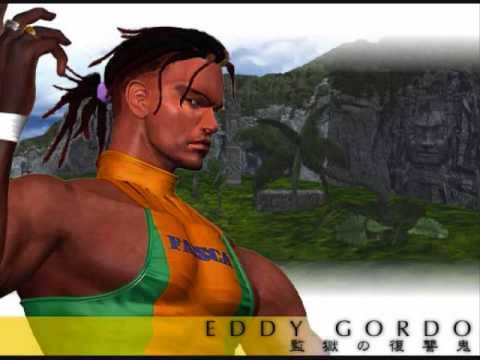
In arcades during the year of 1997 and home consoles the following year, many a player felt rage from a single man. A man whose flips, spins, handstands, and kicks, would bring awe to those who played him, and frustration to those who fought against it. He was both famous for moves never seen before in a 3D fighter, and infamous for being the definition of “cheap.”
Regardless how you felt about him, there was no denying that Eddy was different from the rest of the cast. In a game where homages to Bruce Lee, Jackie Chan, and Tiger Mask were evident, there was nothing who was comparable to Eddy at the time. His unique, yet slightly exaggerated, homage to capoeira brought new fans into the art. Capoeira became a popular buzz word for fighting enthusiasts almost overnight.
But was Eddy always considered to be the face of capoeira?
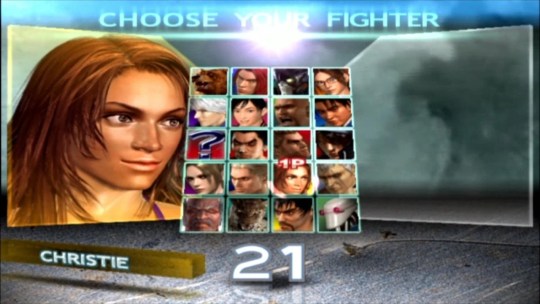
After Tekken Tag Tournament, Eddy was noticeably absent from the main roster. In place of him was a young Brazilian woman by the name of Christie Monteiro. A fresh face for a game that represented a new era in Tekken, her moves were very similar to Eddy’s.
In fact, apart from her normal throws, her movelist were identical to Eddy’s in every way. Eddy being a palette swap for her in Tekken 4 and Tekken 5 brought the “Christie is Eddy” angle to its head. At the time, although Eddy was included in these two games, Bandai Namco was trying to push Christie as the new face.
At the very least, they were trying to push a woman as the capoeira representative from the very beginning.
In a 1998 CVG interview, following the release of Tekken 3, the development team discussed how the concept of Eddy came about. When asked how the team went about designing its roster of characters, the team replied with the following.
“A good example is Eddy, since he wasn't planned to be the character you see at first. The development team wanted to include a character who used Capoeira, so the idea was passed on to the artist team. Mr Kimoto requested the artist to make a female character for Capoeira. However the artist said it was too difficult to design a female character who used Capoeria, so there came Eddy.”
It wouldn’t be until Dark Resurrection that Eddy had his own slot on the roster for the first time since Tekken Tag Tournament.

With the separation of the two characters at last, Christie’s push would be put on the backburner in lieu of Eddy’s importance to the story. Christie’s relevance came to a screeching halt in Tekken 7 as Eddy was one of the final main roster characters revealed without a Brazilian woman in sight.

NO!!!
Anyways, Christie wouldn’t make another official appearance until the mobile Tekken game, but considering the mobile Tekken game is literally a dump of old characters that didn’t make the cut in Tekken 7, that’s hardly a victory.
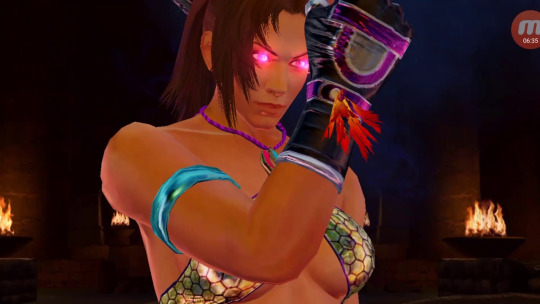
I started writing this back in early 2018, and since then, we’ve gotten Marduk back from the graveyard!
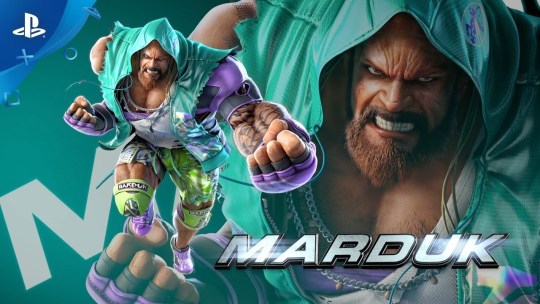
However, I’ve long since stopped holding out for hope. If she shows up, she shows up. If she doesn’t, well. It still won’t dilute the amount of love I have for this girl. Hopefully by the end of this I can shed some light on what makes Christie amazing to me.
So, what happened? How did the one who was pushed to be the babyface of capoeira after Eddy’s origin ended up becoming the queen of the indies known as mobile Tekken? What is it about Christie that makes me admire her as a character? Well, let’s start with her design.
Appearance
So, imagine the year 2001. You’re in the arcades and you see Tekken 4 for the first time. The attract video plays and you’re in wow at the graphics. Especially considering this is the first Tekken on a new engine in the arcade at least. Then suddenly you see this mami twirling and making sensual poses, flashing the biggest grin.
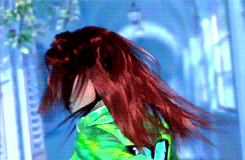
It was at this point you dumped quarters in the machine. Don’t lie. This totally didn’t happen to me at an arcade while I was in the Poconos. Nope.
I remember the rumors at the time. Everyone thought the designers took inspiration from Tyra Banks and Harada himself de-confirmed this.
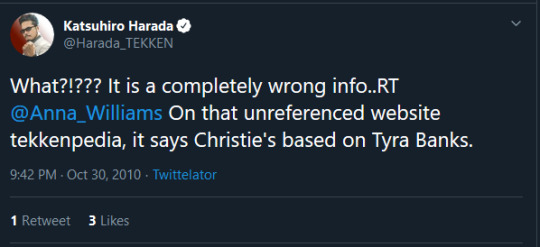
Wearing a low-cut green floral blouse that cuts above her midriff, black leather hotpants with frills at the end, black fingerless gloves, and Spartan-style sandals, Christie’s primary outfit was made to turn heads and accentuate her features. As with most outfits and hair designs in this game, Christie’s design was also made to show off the new graphics engine for Tekken. Christie’s long brunette hair, coupled with her loose-fitting clothing, flows with the wind with every kick and acrobatic motion. Her design was made for comfort in mind as well as ease of movement.
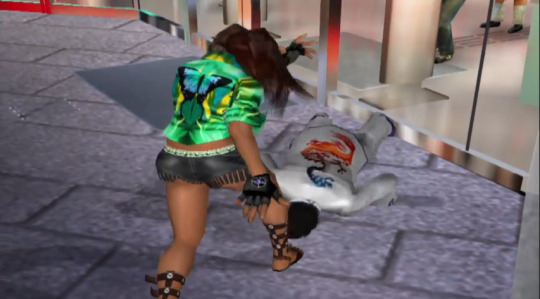
Christie’s competitor’s outfit is a brassiere-style top with silk training pants and green fingerless gloves. Wrapped around her waist is a capoeira belt, much like Eddy’s competitor’s outfit. Whether this is an actual representation of her rank, or just a design choice, is up in the air. I’d like to say it’s the latter, though I believe a purple belt is a high ranking in capoeira.
Comparing Christie and Eddy’s competitor’s outfit, they aren’t too different from each other. In fact, side by side they appear like partners rather than a radical difference.

Following her debut, her primary outfit changes from a green to a light purple top and black to white colored hotpants. The top of her competitive gear is more confined and stylish while retaining the same effect as it did before. As the series progressed, her butterfly motif became more prevalent in her clothing.
With such a dynamic taste in style, one would think that her personality is just as bubbly, and you’d be correct to think so.
Personality
Pointing at her opponent with finger guns and firing off in their direction, Christie enters her ginga stance with a declaration…
“Here we go!”
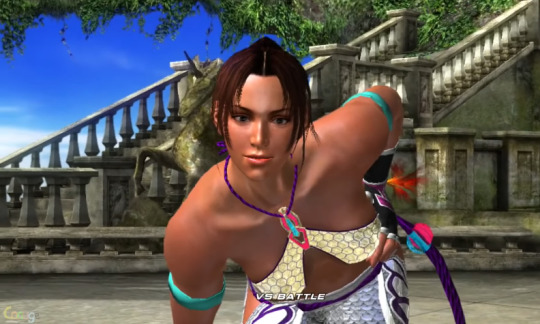
Oozing with confidence no matter who she is fighting against, Christie never backs down from an opportunity to show off her studies in Capoeira arts.
Christie makes it clear to her competitors that if they take her lightly, they will pay for it in a loss.
Perhaps one of my favorite exchanges with another character is when she fights Bruce in Tekken 5. Bruce exclaims that the “competition has gotten easier on the eyes,” in which Christie taunts him in return. When Bruce questions if her capoeira can stand up to [his Muay Thai], she replies with a sultry tone of confidence.
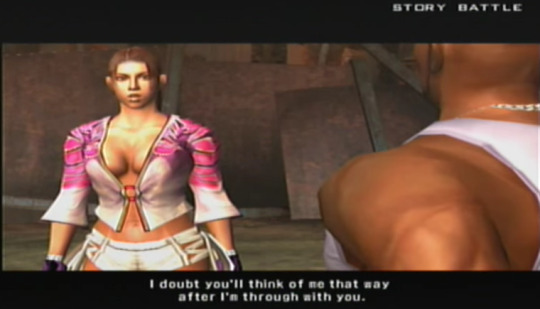
Ultimately, Christie would win the bout and she toys with him, saying that his lack of rhythm will be the reason why he will never defeat her.
It’s exchanges like this, as well as her other intro pose where she blows her opponent a kiss and declares them to “go easy on her,” that she uses her looks to her advantage. It’s almost as a form of intimidation, being caught off guard by swift kicks coming at you at every direction while she emerges the victor, leaving the battle almost unscathed.
There is a depth to this. When things get serious, Christie has a sense of justice within the confines of her own capability. This is commonly brought up whenever Eddy runs off headfirst into danger.
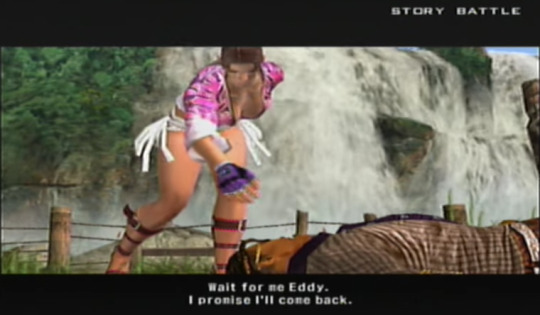
In the same game, when she runs into Eddy, she doesn’t back down from fighting Eddy to save her grandfather’s life. Win or lose, she will fight her hardest for those who she loves, even if it means fighting the one person, she loves the most.
She’s also highly emotional as an individual as evident when she shows her disappointment at the end of her winning the 4th Iron Fist Tournament. This changes to a complete 180 as she sees the one person who she has been looking for all tournament, immediately returning to her bubbly cheerful self. A dark version of this trait shows when she is overburdened with emotion to the point of tears upon discovering that her grandfather passed away.
This combination of a flirtatious happy-go-lucky capoeirista who revels in her fights and a woman who is bound to protect those who she holds dear comes into full force in Tekken 6. Although in the overall canon she takes a backseat, controlling her in Scenario mode reveals hidden layers about her character.
One of the hypothetical scenarios that is brought up is when Christie and Eddy do cross paths in Scenario mode. If the former approaches Eddy, he will exclaim that she shouldn’t be here in high concern. If the latter approaches Christie, she will appear angry that he has, once again, decided to be inconsiderate in being brash for considering working with “Public Enemy #1.”
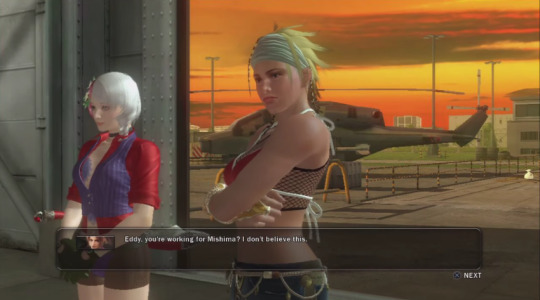
Both Eddy and Christie wish to protect each other, yet they do so by ironically placing themselves into harms way. While on a larger scale, they are two small fish in the giant ocean that is the Mishima bloodline story. If one zooms in on the microscope, you see two troubled young adults who wish to live in peace. One is bound by vengeance while the other is bound by duty.
Story
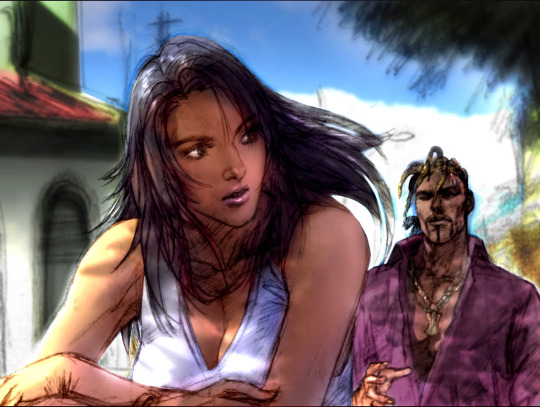
While Tekken 4 is the first time we see and hear of Christie, that game is not the first time we hear of her story. In Tekken 3’s prologue, Eddy was incarcerated after being framed for the murder of his father. During his sentence, he learns the art of capoeira from an elderly master. Up until his release, Eddy perfected the art of capoeira and entered the third King of Iron Fist tournament to exact
That elderly man was none other than…
Well…
The old man never had an official name. The Tekken wiki has his name as
DENSETSU NO KAPOEIRA MASUTAA
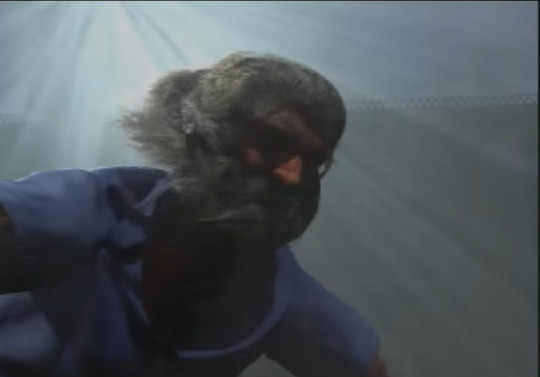
or the “Legendary Capoeira Master.”
For a while, the urban legend regarding his name was “Ho Chi Myong,” but unlike the Tara Banks inspiration, this wasn’t ever confirmed by Bandai Namco. I don’t think it ever will.
The one thing that was confirmed, however, was that the
DENSETSU NO KAPOEI---I’m sorry.
The elderly capoeira master was Christie’s grandfather. How did Christie herself know capoeira? Through Eddy, as a form of mutual respect for her grandfather teaching him the art. Suddenly Christie and Eddy having identical moves isn’t farfetched.
However, I always wondered why Christie’s grandfather never taught her capoeira himself? The obvious answer would be because he, too, was imprisoned. Still, you’d consider that maybe he would have taught her when she was a child or began to teach her. Who knows?

At the end of the King of Iron Fist Tournament 3, Eddy finds out that it was Kazuya Mishima who orchestrated the events which led to his father’s murder and his own imprisonment. Since then, he has sought out to find Kazuya and settle the score on his own terms.
Enter Tekken 4, where a concerned Christie realizes Eddy has gone missing. In her response, she spends the 4th Iron Fist Tournament looking for Eddy, sensing trouble brewing on the horizon.
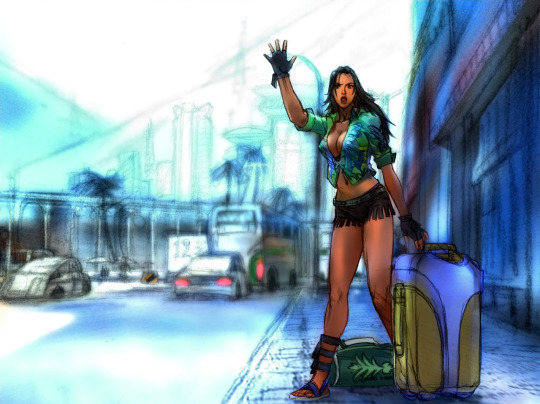
Honestly this was Eddy’s fault to begin with. Had Eddy not told Christie that he was going to avenge his father’s death, she wouldn’t have bothered to put herself in harm’s way. However, Christie’s story had to start somewhere yeah?
In the end, Eddy doesn’t find Kazuya, but, if we take Christie’s ending in Tekken 4 as canon, we can deduce some details.
Christie wins the iron fist tournament, incredibly bemused, as she failed at her original goal in locating Eddy. However, seeing a familiar face in the crowd, she runs over to Eddy in a full embrace. Eddy appears in this ending with a cast on his arm, so it is assumed that his progress in finding his father’s murderer ended prematurely. Even so, despite his lack of success, he still shows up to his girl’s victory match in support. What a romantic.
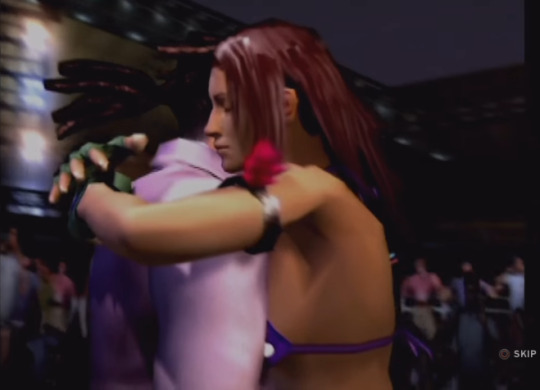
Several months later, tragedy strikes. Christie’s grandfather is inflicted with an illness and the race to find enough money to pay for the operation begins. In the end, no matter who wins the tournament, they use their prize money to pay for the operation which turns out to be a success. Christie, Eddy, and her grandfather are all seen at a park practicing capoeira and everyone lives happily ever after, right!?

Unfortunately, not.
Several years later and the climate is different. Jin Kazama wages war against the world and it turns out that neither Christie nor Eddy was able to win the tournament after all.
Running out of time and resources, Jin makes a deal with Eddy. If Eddy works for him and helps exact Jin’s vengeance against Kazuya, then Jin will help pay for the operation. Considering this as an opportunity to become in direct contact with Kazuya, the murderer of his father, it’s a win win for Eddy.
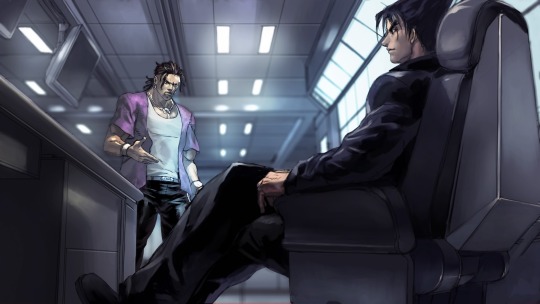
He didn’t want to be a part of this war, but for the safety of the one person who was a father figure for him and the chance to kill the one who has caused him years of torment, he will take up a gun for Jin.
So, where does this leave Christie? Back to where we once were in Tekken 4, on the lookout for Eddy and her grandfather.

Do you see where I’m getting at now? “As the series progressed, Christie’s role became diluted?”
The sad part is that Christie is not the only character to suffer through this “character dilution.” The4thSnake’s video on Asuka Kazama goes over the same points that I could ever make, so please give that video a watch when you can. In Tekken 6, if it wasn’t Mishima related, it was on the backburner.
youtube
Once again, both parties are unsuccessful. Christie never finds a cure for her grandfather’s illness and he succumbs. Eddy is deceived by Jin, refusing to hold his end of the bargain, and is unable to save his master’s life. While visiting his grandfather’s grave, Christie discovers Eddy.
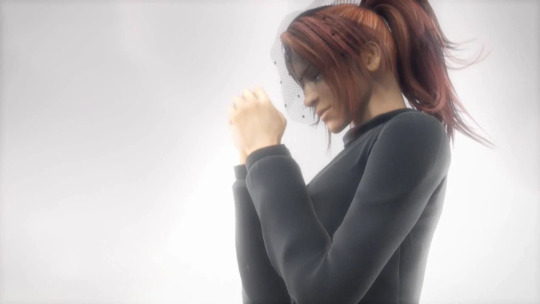
Instead of a warming reunion, Christie, in a fit of rage and sadness, slaps him while demanding where he was. In response, Eddy stands there, motionless, as he throws his Mishima Zaibatsu pin to the ground.
This is where Christie’s story ends. Officially.
What began as a bright young capoeira student ended a grieving shell of a person, thanks to the dishonesty of Mishimas and Eddy for pulling a Knuckles and believing Eggman---Jin Kazama.
If we look at the Tag 2 endings and assume, they take place after 6, Eddy takes a page out of King’s book and opens up a capoeira school for orphaned children. After some time passes, he embarks on a trip to become the world greatest stuntman the Mishima Zaibatsu has ever seen!

No of course not he’s going to confront his father and master’s murderers of course! What else would Eddy POSSIBLY do at this point!?
In Christie’s ending, as a continuation, she catches wind of this and chases Eddy, but, as history tends to repeat itself, she’s too late. Eddy is already on the train.
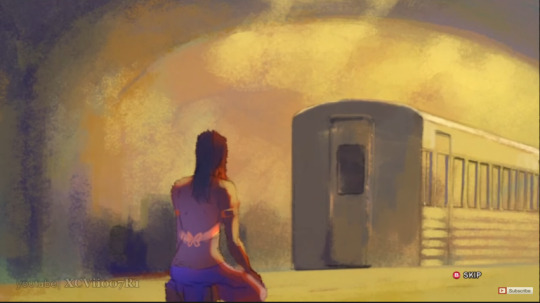
Some. Things. Never. Change.
At least she was spared a grim fate, unlike our friend here.

Conclusion
So. Where do we go from here? From the beginning, we know that Eddy is an integral part of Christie’s story. However, there are signs in her design that shows she can hold her own, both in a fight and in her sense of justice.
I recommend anyone to play through Scenario mode with all of the available roster and not just Lars, but in Scenario mode, Christie has a sense of justice that almost felt refreshing. It wasn’t just simply “where’s Eddy,” but it was also “I have to stop the messed up things from going on in the world”
Earlier I posted a photo where she confronts Eddy for working with the Mishimas and she has no qualms in defeating him to knock sense into him. I also mentioned the confrontation between Bruce and Christie, which is just about non-canon as far as Tekken 6 is confirmed. They treat their encounter as if it was the first time they’ve ever met. Bummer.
But there are signs of life for this character and when it shows, it’s refreshing to see. Christie is not the only character who suffers from this, but she is the one who is marred by the reputation of “always being in Eddy’s shadow.”
When discussion is brought up on why she shouldn’t be in the game? “Eddy is already in there.”
When the game throws her into a repeat storyline for the third straight game in the series? “Eddy is already there.”
Why is Christie out and about? “Her grandfather, but Eddy is there as well.”
Part of the reason why I considered myself a Christie main is because Christie is an underdog in the Tekken universe as well as within the competitive scene.
The irony here is that Christie was meant to replace Eddy, but the inverse happened.
One day, Christie can exist without having to worry about being in Eddy’s shadow. A fan can dream. Until then, I’ll always consider her my favorite fighting game character so there’s no replacing that at least.
There will be a Part 2 to this as there’s one key game that she’s a part of where she does regain some of that luster I wish she had in the main series. A game that is largely underrated but a game where Christie has had her moment in the sun.
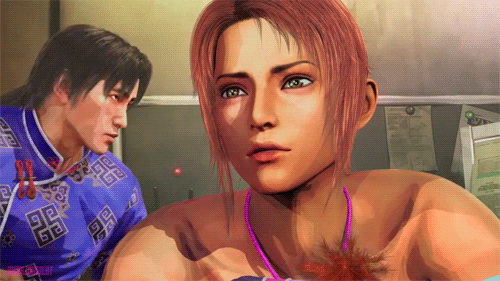
Stay tuned for Part 2 soon! If you weren’t sick of me talking about Christie and made it this far, congrats! Stick around for the follow-up!
5 notes
·
View notes
Text
[Review] Star Fox 2 (SNES)

It’s way past time I finally got around to playing this on my SNES mini. It’s an interesting kind of sequel that’s very different to the first but still fits right in, and has a lot of ambitious ideas to it.
Quick history lesson: Star Fox was a SNES rail shooter that used the Super FX enhancement chip built into its cartridge to create 3D polyognal graphics that were advanced for the time but feel dated now, especially with its low framerate from pushing the console so hard. Afterwards Argonaut worked on a sequel using the improved Super FX 2 chip and essentially finished it, but Nintendo cancelled it due to the impending (at the time) N64 launch. They then took many of its ideas—and reportedly, code—to create Lylat Wars on that system, without crediting or financially compensating Argonaut in any way. This still makes me mad.
But anyway, this mythical lost game was in fact perfectly playable in a mostly-completed state for many years due to ROM leaks, but it got a slightly more polished official release on the standalone SNES mini-console, and later through the Switch online service. Having read an LP of the ROM dump years ago, I finally tried it out for myself and enjoyed it more than I expected.
There are very few sequences in this game that are akin to the Star Fox rail shooter experience. Instead, you start with a 2D tactical map of the star system, moving your chosen pair of Arwings (including new (female!) team members Miyu the lynx and Fay the poodle) from planet to planet. Enemy forces and missiles also move in real time (even while you’re in the shooter segments) and must be intercepted to defend Corneria. If it takes too much damage it’s game over. There’s an orbital defence platform that has a limited ability to destroy enemy units, but there’s also a type of enemy that can capture it and use it against you. This screen can be overwhelming, especially on higher difficulties, and gets easier as you progress and take down targets, although periodic events refresh Andross’s attack on the system. The amount of player agency is interesting but adds pressure especially with the relentless time mechanic.
Any unit interception transitions you to a “space battle” segment, an all-range first-person dogfight in a 3D arena (although you don’t really change your height) fighting against one of the many random types of ship or missile. Each have their own tactics, which keeps things fresh, and the Star Wolf squadron makes their debut here too as individual miniboss battles. The relatively low draw distance and speediness of many enemy types makes these sequences disorienting though, and you spend a lot of time turning around. The larger enemy carriers also briefly start as “space battle” approaches before transitioning to the interior-style gameplay that is probably the headline gameplay style.
Inside a carrier or on a planet surface, you have a third-person view of your Arwing and can freely swap between flight mode and walker mode. Most of the environments and simplistic “boss fights” are set up for walker mode in these zones, and this is also where the game takes some faltering steps into the territory of the 3D platformer, very much an unperfected art at the time. Planets also involve first finding how to unlock a base entrance and infiltrating it to clear out Andross’s presence, which pits some exploration, 3D strafing combat, and light puzzle-solving against the ever-present time crunch of the overall tactical map which you must always be aware of (General Pepper sometimes will message you in the typical Star Fox communicator style to warn you of external events).
Juggling these three styles may make the game seem overloaded, but it does a good job delineating these segments and balancing them against each other, all while challenging the player’s mindfulness of the overall tactical situation. Expert mode (the hardest of three difficulties) is where the game comes into its own and shows the player the most content, but also has the highest potential for frustration as you can easily get overrun and lose progress. It’s a game designed for repeat runs, to be beaten in one sitting, but on repetition much of the battling can feel like busywork as you continually take down fighter squadrons and missiles. And the randomisation elements don’t stop the cramped carrier and base interiors from quickly becoming incredibly samey.
On reflection, the highlights of the game for me were the planet surfaces before the base infiltrations. There’s lovely varied backgrounds and nice music (overall not nearly as memorable as the first game’s score unfortunately), as well as different kinds of tasks to perform and heavier use of the transformation mechanic. There’s more novelty there than the repeated dogfights and interiors.
A fun part of playing this was seeing all the stuff that made its way into other Star Fox games. As mentioned, Nintendo took stuff like All-Range Mode, Star Wolf, and elements of the final boss encounter to use in Lylat Wars. Argonaut’s successor Q-Games under Dylan Cuthbert of course reworked the general structure into Command much later, which I judge has similar problems of tedium through repetition but expands on character variety, context of battles, and planet-level tactics. Perhaps through coincidence parts of Namco’s Assault often feel similar to the planetside segments, exploring a ground space while swapping between on foot and airbound play. And of course Zero revisited the transformation mechanic. As such finally playing 2 for myself feels like filling in a missing piece in the series’ genealogy. It’s not perfect but for the time it’s very impressive and still enjoyable today. It probably should have been released in 1995 eh!
1 note
·
View note